Jamboree Africa gives updated and verified interesting General Africa Facts. Africa is an amazing continent to visit, as almost every type of habitat is found there/here.
For example:
- It has true deserts such as the Sahara (North Africa) and the Namib (Namibia/ South West Africa).
- It boasts great thirstlands, like the Kalahari (covering much of Botswana, parts of Namibia and regions of South Africa.). A ‘thirstland’ is an arid/dry area where there are big trees, but no surface water.
- It has beautiful mountain ranges like the Drakensburg mountains (Kwa-Zulu Natal, South Africa) and the stunning Ruwenzori mountains (eastern equatorial Africa, located on the border between Uganda and the Democratic Republic of the Congo.)
- It also has large tropical rainforests in its equatorial zone.
- Beautiful green forests on its coasts and on its mountain slopes.
- Vast open grasslands (savannas).
- Breathtaking highland plateaus, like those in Guinea and the Ethiopian Highlands.
- Mangrove swamps along the Indian coast.
- Live and dormant (sleeping) volcanoes in East and Central Africa
Lions Vs Hyenas General Africa facts
Lions and spotted hyenas are fierce enemies — they are Africa’s two top predators and will kill each other — especially the young.
However, both do not have much affect on reducing the numbers of prides of lions or clans of spotted hyena, but both also attacks and kill other competitors — the African wild dog leopard and the cheetah. They do have an impact on their populations — especially the cheetah cubs. About 90-95% of cheetah cubs die before they reach 1 year, and 70% of those are due to the predation of spotted hyenas and lions.
Different species normally ignore each other’s territory, but not lion’s and spotted hyenas — these two will defend their territories like they do against their own species.
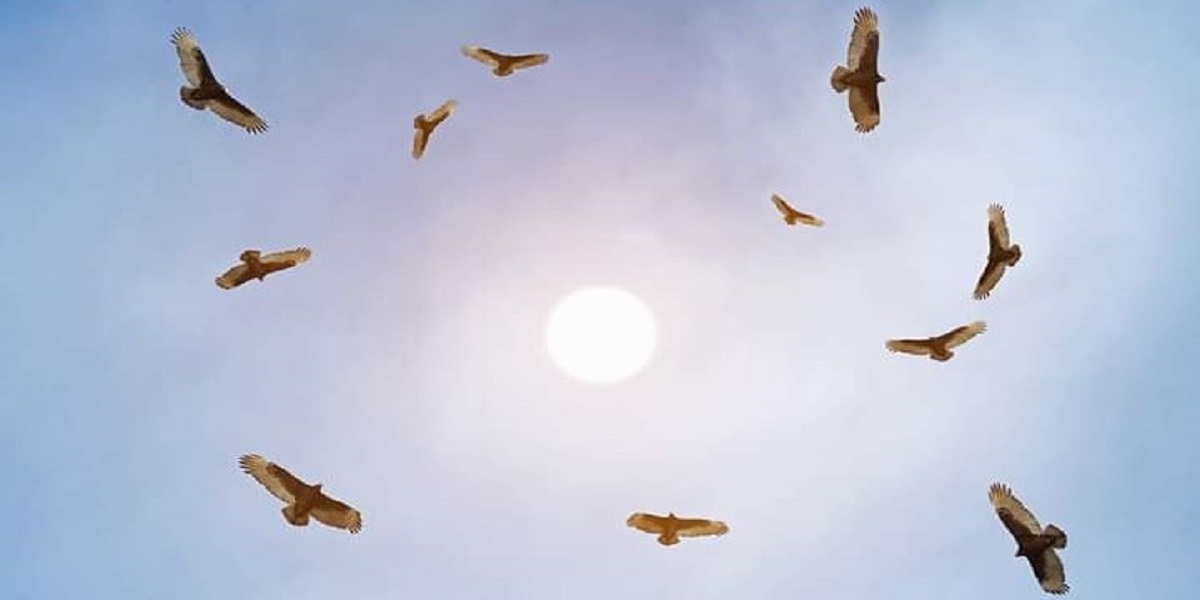
Lions and the true hyenas are known to use circling vultures to find a carcass.
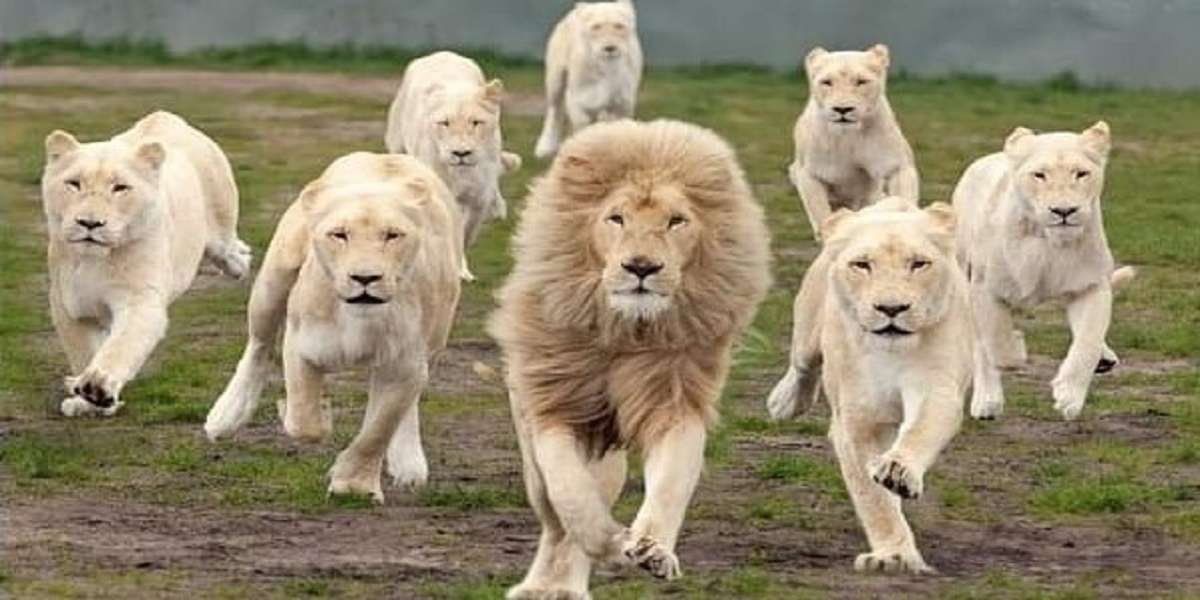
The size of spotted hyena clans and lion prides (both are Africas top 2 predators) gives you a good idea of the health of an ecosystem. Those large clans, prides and overall populations reveal that there are plenty of herbivores in that area for them to have large numbers — there is enough food in that area.
And if there are many herbivores that means there is good water and good grass and trees — a healthy ecosystem.
Africa’s two top predators are:
- Lion.
- Spotted hyena.
The spotted hyena is not as powerful as the lion — the lion is the alpha as has no natural enemies.
The spotted hyena does have a natural enemy — the lion, but a lion is not as successful in hunting because as powerful as it is, it does not have the spotted hyena’s amazing stamina — it can run for ages and run its prey to exhaustion where it is too tired to fight and run — so it can hunt any size of prey.
Cheetahs Vs Lions and Hyenas General Africa facts
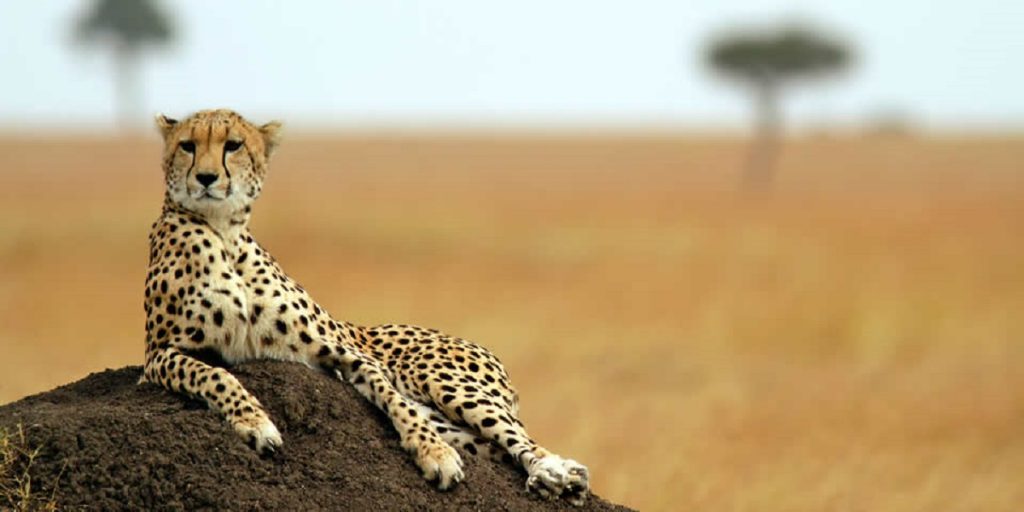
Lions and spotted hyenas are a cheetah’s greatest enemy.
When either of these two appear after a cheetah has killed its prey — there is little a cheetah can do but abandon its prey. In certain areas, as high as 30% of their prey is stolen by these larger and more dangerous predators, and on average (all of Africa) about 15-20%.
This is likely the reason why they hunt during the day and sometimes in Africa’s hottest times, as they avoid the other predators that prefer to rest in the shade during those times. They also eat fast — faster than other predators because they cannot hide their kill.
A cheetah can eat an adult Thomson’s gazelle (their favourite prey) in only 2 hours!
- Luckily, that food-filled belly soon disappears and they are sleek again.
Namaqua chameleon General Africa facts
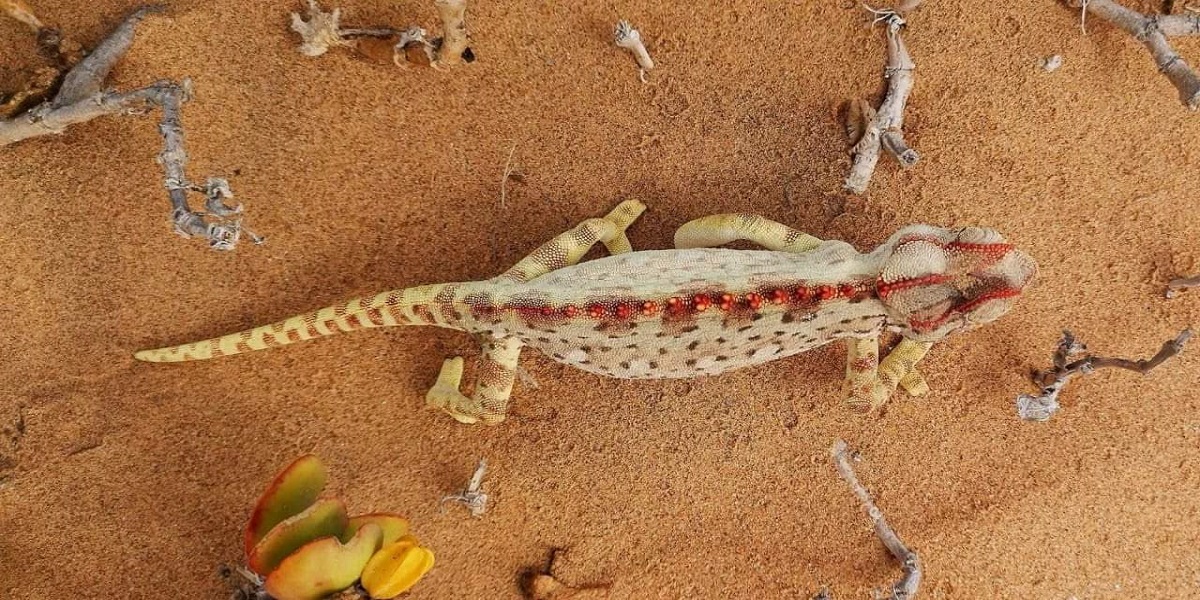
The Namaqua chameleon is one of the most extraordinary desert adaptations. To heat up, it absorbs the morning sun (as it is cold-blooded), but only on one side of its body — that part (perfectly separated down the length of the middle of its head, body and tail), and that area darkens in colour. The other side remains light in colour to prevent the heat from escaping.
- Namaqua chameleon is found in the western desert regions of Namibia, South Africa and southern Angola.
Warm Blooded Animals General Africa facts

Warm-blooded animals have greater brain power than cold-blooded animals, as warm-blood feeds body tissues to perform at their best. For example, a monkey is more intelligent than a lizard.
All mammals have one thing in common: They have sweat glands that have been modified to produce milk.
Another definition of mammals is the amount of bones connecting their eardrum to their inner ear. Like in birds and reptiles — they have only one bone, whereas mammals have 3 bones.
— The ear bones in mammals are called Malleus. Incus. Stapes.
— The inner bone-ear in a bird is called ‘stapes’.
Impala General Africa facts

When an impala jumps its activated everywhere including the pheromones at the black patch.
What was noticed and rather interesting… The male impala assesses his rivals horns and usually backs off if they look at his gracefully curving horns, but it is not only his rivals… The females were noted to graze alongside the male with better horns.
A male impala will also keep an eye on his girls, and if his spectacular horns are not intimidating enough and a rival comes closer, he will raise his tail, yawning and flicking his tongue.
Impalas are one of the most commonly seen antelopes in certain parts of Africa — especially Southern Africa. These beautiful antelopes are different. Southern Africa boasts 32 species of antelope, but the impala is the only one out of all of them that has metatarsal glands on its hind legs. These glands produce a liquid-like scent, and it is believed it is left on grasses and that so herd members can follow when chased.
Like many animals, impalas cannot see colour, so when they run (usually from something) besides leaving scent (below post) they also raise their tail, showing the following impalas a flash of white and from the now visible white stripes. The black stripes on its rump add to that unmistakable sign of ‘follow me!’.
Springboks General Africa facts
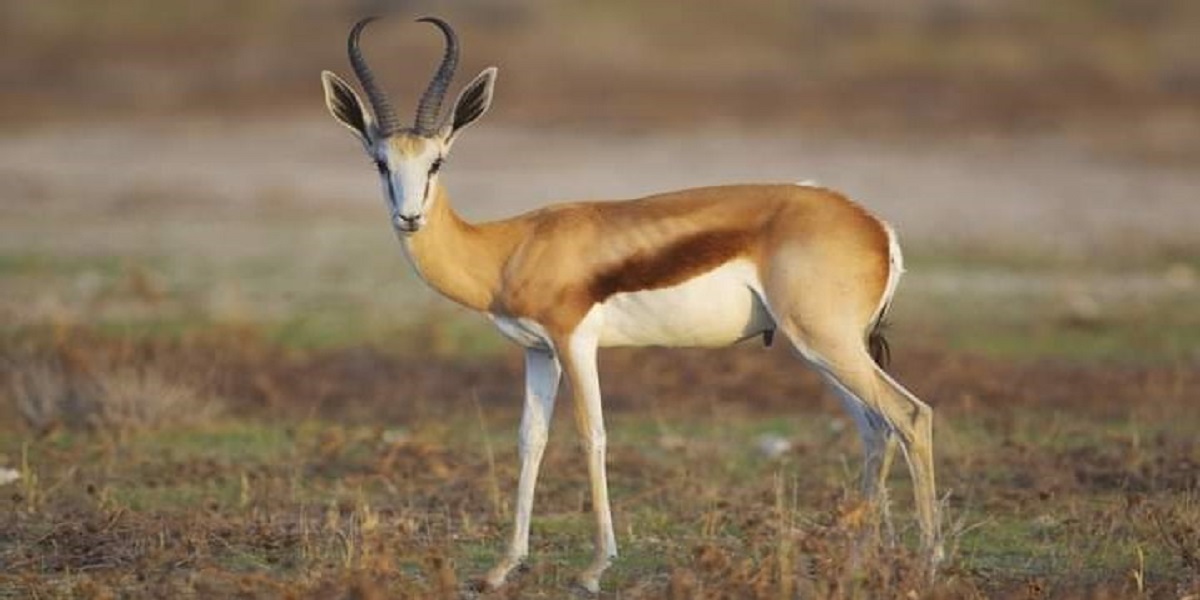
Springboks are both grazers (eat grass) and browsers (eat vegetation from trees and shrubs), and also hardly, if ever, need water as they get water from the vegetation and morning dew.
- Please know the shape of the horns, as some gazelles have similar markings, but not similar horns.
Gazelles jump in the air and often it looks to be for no reason. The true reason for ‘pronking’ or ‘stotting’ is not really known, but the two reasons most used for this show are usually when they have seen a predator approaching them and want to show them they are agile and athletic and very healthy.
The other reason has to do with display — showing the girls just how fit and healthy this stud actually is (the one showing off to them), and his rivals to back off as this healthy ram will flatten them.
Rufous Sengi General Africa facts
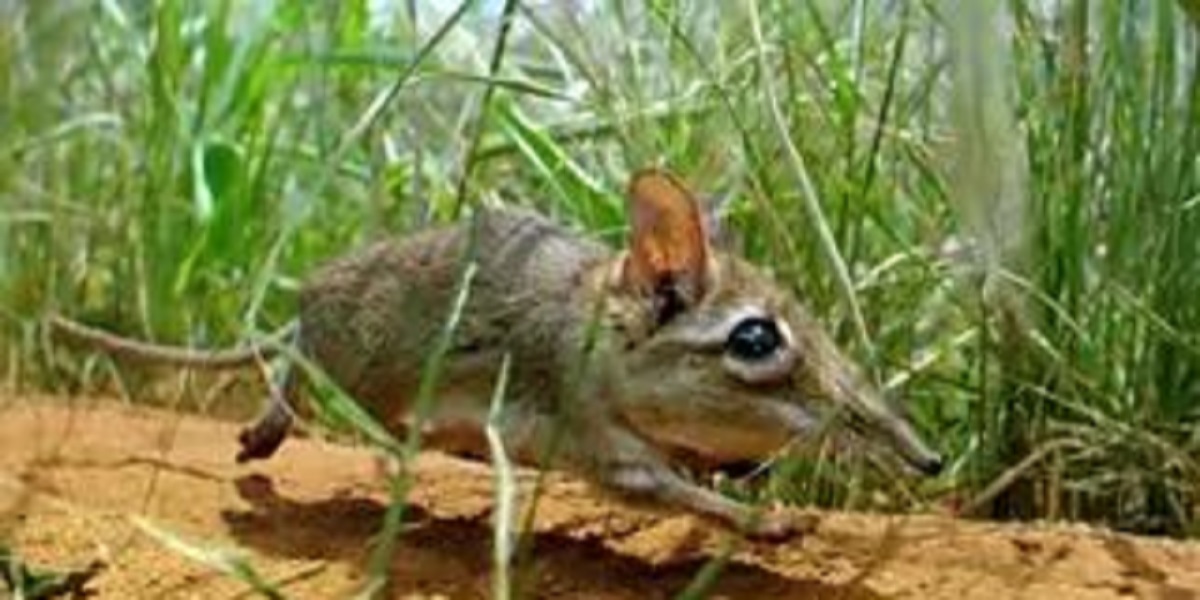
The rufous sengi lives like an antelope — a tiny antelope. Instead of living in a nest or burrow, this little mammal (not a rodent) relies on hiding spots in the vegetation. If it spots a predator, like many antelope, it drums its little rear feet on the ground likely to warn mates and young to dash for their well-known hiding spots.
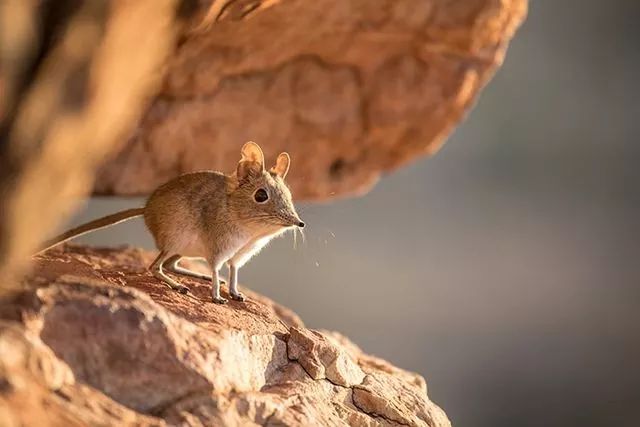
Sengis (or elephant shrew one of the small five) are not a rodent are monogamous (have one mate, usually for life) and hold large territories for their size — 1, 600 – 4, 500 square metres (about an acre). And they fiercely defend it against the same sex — so the females will fight females, and the males will fight males. They fight by first slowly walk around each other (act tough) and then in a blur of fur, they fight, but although vicious, it is over in a few seconds.
Great Rift Valley General Africa facts
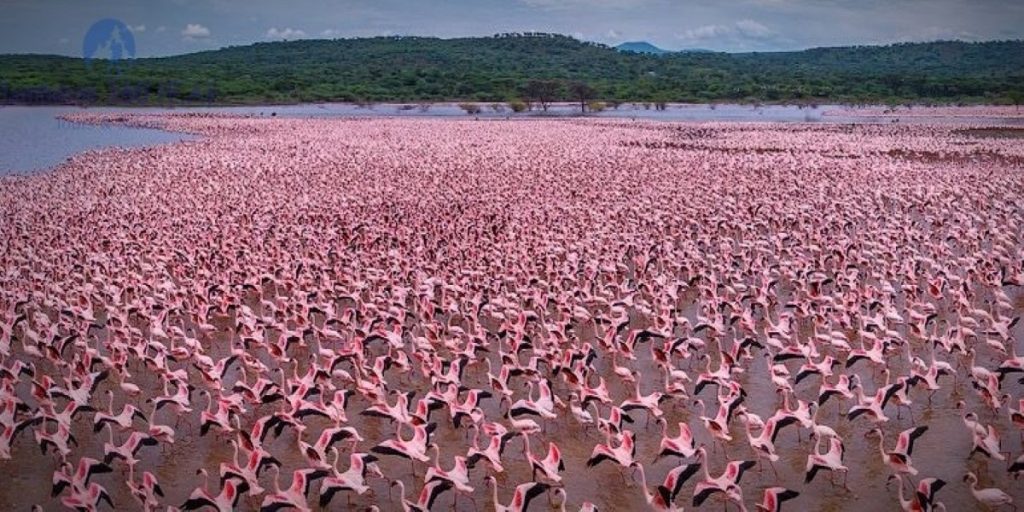
Africa’s Great Rift Valley is long. It stretches more than 6, 000 km (3, 700 miles) and along its length lies many lakes. Some of those lakes have few places the water can flow out– so it sits there and the waters become soda lakes, which are high in alkaline mineral salts and temperatures that can reach 60-65 degrees Celsius (140-150 degrees Farenheit). Few living things can survive in that extreme climate. The one that calls this paradise is the lesser flamingo.
Herbivores General Africa facts
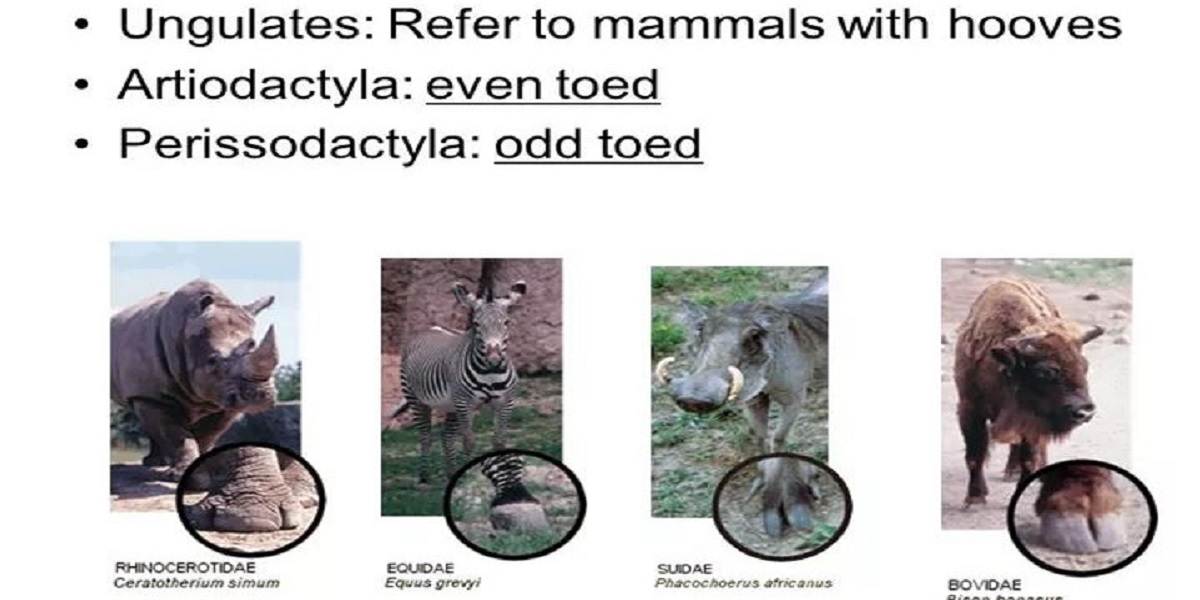
Antelopes, goats, cattle, buffaloes and so on, are ‘even-toed ungulates’, as they have an even number of hooves (2 is an even number in mathematics).
So, buffalo and the warthog and above are even-toed ungulates (as 2 is an even number), and rhinos and zebras are odd-toed ungulates (as 1 and 3 are odd numbers — although a zebra is part of the horse family so also had 3 hooves, although we now only see one).
Hooves are like our finger or toe nails, and they are also made of keratin (a hard protein).
Antelopes and the Cape (African) buffalo belong to the same family — Bovidae, but they are not an antelope; the Cape buffalo is a bovine.
Herbivores Vs Carnovores General Africa facts
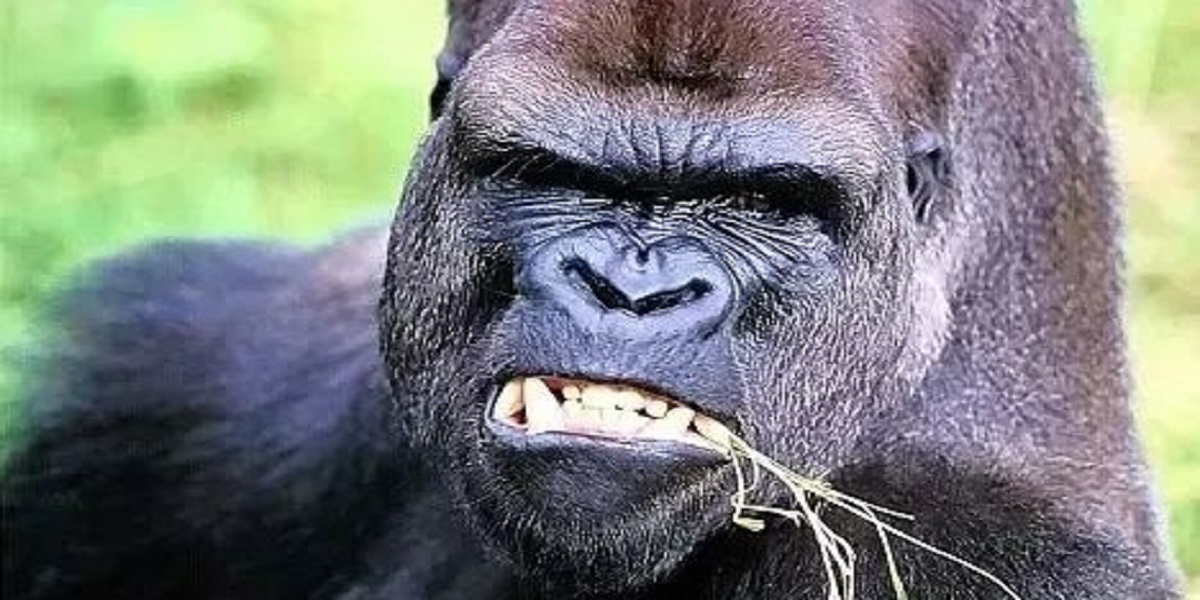
Here is another addition to the confusion regarding carnivores, but this has more to do with herbivores. We tend to think only carnivores and omnivores have canines (used mainly to pierce– stab), and herbivores do not have them. Not so, as some herbivores have them, for example the gorilla. It is a herbivore and yet has fearsome canines.
Huh?!
Animals cannot carry weapons around so they evolved to never need to do that and have ‘built-in’ weapons, like teeth and claws (mainly).
And also needed to tear some fleshy plants — like tubers and roots.
So, some herbivores have canines for three reasons —
- Defense.
- Fighting.
- Eating certain plants.
Carnivores sleep longer than herbivores.
Herbivores are awake for longer because they need to be awake as long as possible to get enough food and energy.
- A gorilla is a herbivore and does not eat any meat.
African Meerkat General Africa facts
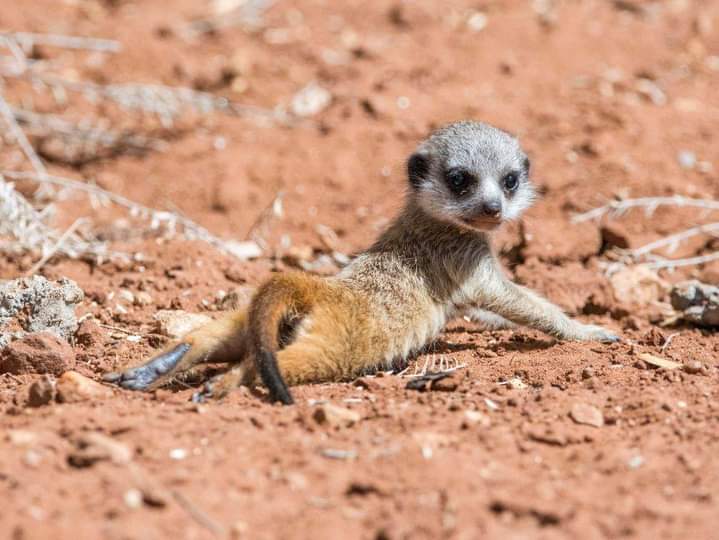
A female meerkat is pregnant for 60-70 days, and once the little pups are born, they will remain in the dark and safe burrow for about 19 days before greeting the sun for the first time.
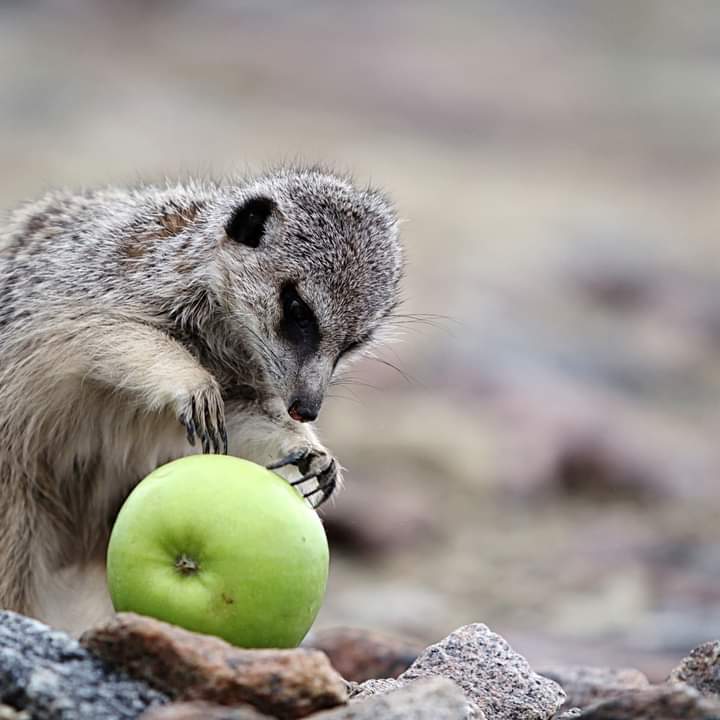
A meerkat belongs to the mongoose family, and they are omnivores because besides eating insects, small reptiles, birds, eggs, scorpions and spiders, they also eat fruits and plants, like this little guy found an apple, but I bet he is more interested in the insects wiggling in and around it, like beetles.
In some parts of Africa, mainly on the border separating Zambia and Zimbabwe, meerkats are adored and called ‘sun angels’ and they are believed to protect villages.
Meerkats can dig a lot! As much dirt as their own body weight in only a couple of seconds.
Plants General Africa facts
Without plants we would have no animals — no herbivores (eat plants) and omnivores (eat meat and plants) means no carnivores (eat meat). Please take a moment — just 10 seconds, and close your eyes. Now, imagine a world with no animals, and that includes insects.
Anything that is part of the animal kingdom is an animal — including us, as we are primates. One of the great apes.
Now, close those eyes, breathe deeply and imagine that type of world…
Home ranges vs. territories General Africa facts
Some basic differences:
- A territory is an area which is defended.
- Animals that do not defend their area they inhabit from other animals of the same species, is a home range.
- A territory is usually a smaller area than a home range.
Examples: Elephants have home ranges and lions have territories.
Honey badgers General Africa facts
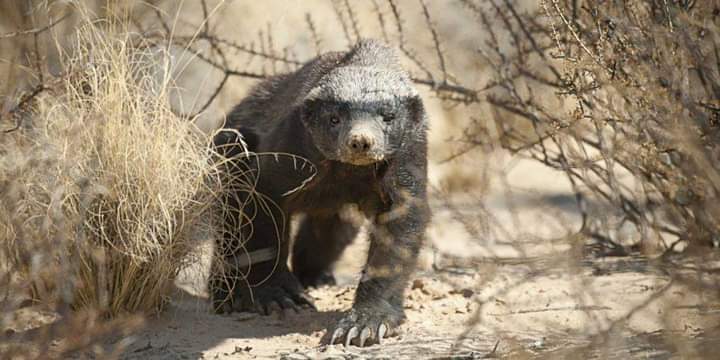
Honey badgers are not part of the hyena family — hyenidae, but the two species share something physical in common.
They both have anal pouches that secrete a foul-smelling oil-like substance that they use for defense, but more often used to mark their territories — it is believed that honey-badgers use this suffocating smell to calm bees when they raid their hive.
African Savannas General facts
The African savannas are one of the hottest areas in the world. In environments like this, animals have adapted to these extreme temperatures and it is usually noticed the most in the shape of their ears.
In cold climates, animals tend to have small ears that are close to their body.
In hotter environments, some animals have far bigger ears so that its surface can support a larger area of blood vessels. So, these important networks of blood vessels cool the blood, which circulates the body, by allowing cool air to pass over them (thereby cooling the blood — which cools the body temperature).
Bush fires General Africa facts
Bush fires are often accidental, and this natural bushfire, although it looks devastating — especially out in the dry savannas — it is a good thing as it necessary to balance the ecosystem — it clears areas, enabling new, nutritious vegetation to grow — it also kills invasive plant species and a few other points.
The birds love it, especially the rollers diving for insects that are trying to escape the flames. It is beautiful, but scary when you see these flashes of blue and other attractive colours (birds), diving among flashes of orange (flames).
Well, it was, but climate change has made the air drier, and that normal bushfire that is controlled by the natural elements, now rages out of control, and eats up and destroys a lot more than the ecosystem can allow.Natural bushfires can occur by lightning strikes, but unnatural bushfires can occur by poachers trying to flush out prey
Alligators, Caimans and Crocodiles General Africa facts
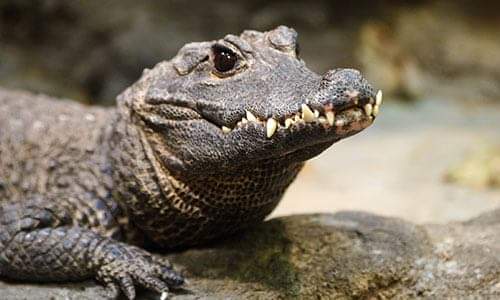
Alligators and caimans are not native to Africa and nest differently to crocodiles (that are found in Africa).
Alligators and caimans have proper nests — where they collect vegetation in piles, near water. They then lay their eggs on these nests — similar to birds, but cover the eggs with more vegetation..
Most crocs, though, dig holes in the sand also near water — like a turtle and deposit their eggs in the hole and then cover it up and wait.
All of them guard their eggs.
You do not find caimans in Africa (caiman crocodiles). Some may argue that there is indeed a caiman in Africa. The African caiman. That is the (West) African dwarf crocodile .
The African dwarf crocodile is a burrower — just like certain mammals — like the meerkats.
During the day, it rests in them, and usually comes out at night to hunt — it is active at night so it is a ‘nocturnal’ animal. In some areas, you might find them around during the day, but they kind of hide in isolated pools, or under tree roots in the water, or between roots at the water’s edge.
This is a vulnerable species (conservation status), and despite this it is still hunted and besides for meat it is also hunted for its skin. The skin of this croc. is of low quality, and the seller only finds this out when he is trying to sell it and no one buys.
Seahorse General Africa facts
The seahorse looks like a 100% harmless creature from a Fairy-tale book.
It also looks so innocent and fragile that we naturally assume this marine creature is a prey species… In fact, this proves how looks can be deceiving, because this ethereal little animal is actually a predator — and a sly and stealthy one at that.
You see that little, almost transparent fin on its lower back?
Well, that fin flutters at 30-40 times a second! The seahorse is so well camouflaged it moves through the shallows and seaweed undetected, and then surges forward astonishingly fast (thanks to that fin) to snatch a passing little fish.
Crickets General Africa facts
Crickets have ears, and do you know where you find them? A really bizarre place. Their ears, situated on their front legs! To be more precise… A swelling just below their knee on the front legs — that is their ‘ear’. Weird!
African Penguin General Africa facts
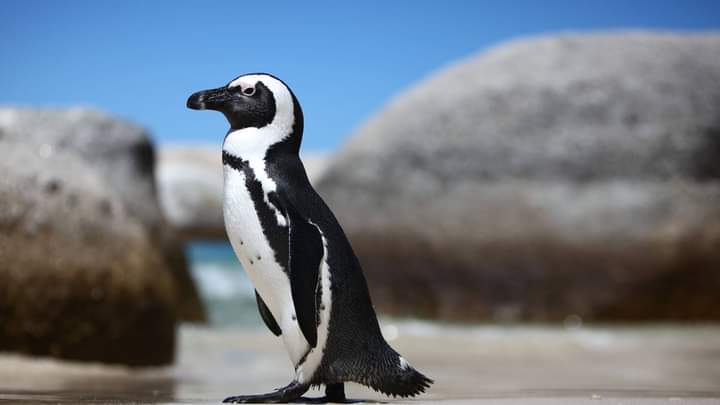
Overfishing is an important reason for destroying the rare and endangered African penguin.
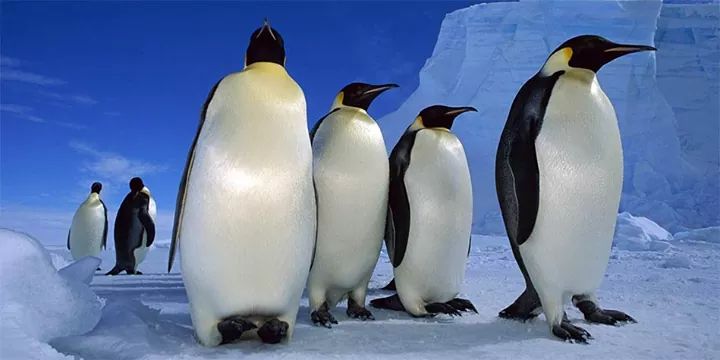
Feathers are better at insulating — they keep the bird warm, far better than fur ever could (no matter how thick it is) and proof of this is that we only find one animal in the freezing temperatures of the coldest points of the Antarctic — The Antarctic icecaps, the coldest place on earth. In that terribly hostile environment, only a certain bird lives and survives. The tallest and heaviest penguin — the emperor penguin.
Beautiful Mountain Ranges in South Africa
One of Africa’s most beautiful mountain ranges is found in Kwa-Zulu Natal, South Africa. The Drakensburg mountains — called ‘uKhahlamba’ by the Zulu Nation — that word means ‘barrier of spears’, and in this area vultures soars so high, they are believed to see into the future. The vulture is an important animal to the Zulu Nation, so important that she is the Zului’s Mother Nature and gave birth to the Zulu Nation — the vulture gives life, but also eats death. A magical and sacred animal.
Tropical Rainforests General Africa facts
West and East Africa has tropical rainforests — more so West Africa, but both these areas was mostly covered by dense forests. Gorillas occupy an area (includes Central Africa) is called the ‘Hagenia zone’. Although this area is large, they are stranded here and are unable to move out of this area.
Africa Continent General Africa facts
Africa is an ancient Continent and proof of that is found in many parts of this huge but mysterious continent. In East Africa, we find truly ancient trees — These great trees are the East African yellow woods, red stinkwood and the ancient hog gum tree that has a history that can trace back 45 million years (the tree we see are not 45 million years old — their history can be traced that far back).
- Hog gums are now found in the New World.
Giraffes and Zebras General Africa facts
These are captive animals and having them living together is totally normal, as in the wild giraffes are often seen in the company of a herd of zebras. The zebras have an excellent sense of smell, and the giraffes have brilliant eyesight so together, they are great at spotting an approaching predator.
Animal Relationships General Africa facts

Some animal’s close relationship to other living animals is bizarre — like the hippo. Its closest living relative is cetaceans – whales, dolphins and porpoises. That is why a group of hippos is called a ‘pod’- just like a group of cetaceans.
Horns General Africa facts
Horns are bony outgrowths of the skull and they are covered with keratin (a hard protein) — the same substance that makes whiskers, feathers, fur and hooves.
Although we call the ‘horn’ on a rhino a rhino horn — it is actually not a horn because it has no bone in it. It is completely keratin — dense hairs.There is no bone in the centre, unlike true horns.
African Deer General facts
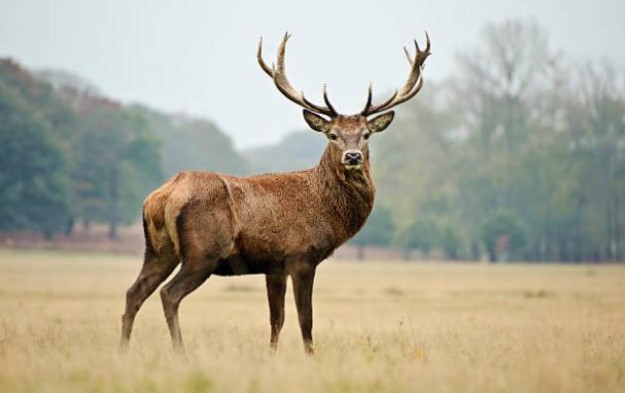
We tend to believe no deer exist in Africa, but that is not completely true because a smaller sub-species of the red deer are native to North Africa — The Barbary stag, also known as the Atlas deer (Atlas mountains).
- This deer is classified as an endangered animal.
Did you know dear they have no gall bladder.
The world’s biggest deer are the moose (native to North America and called ‘elk’ in Europe), and the world’s biggest antelope are the elands (native to Africa).
Meat – General Africa facts
Meat is muscle, and out of all the foods, meat is the most energy-packed foods — perfect food for the energy needed for carnivores.
Nutrients and Minerals General Africa facts
Animals need minerals in their diet, some dig for them in caves, some dig for them in the soil and so on, but some travel great, dangerous distances to add them to their diet. We often are amazed at one of the world’s most spectacular mass migrations — the Serengeti migration, but few of us know that one of the reasons for their migration is their need for minerals.
In the Serengeti they are content because this is volcanic soil, so loaded with minerals, but then the rains begin to fail towards the end of May. The grass withers and the waters grow scarce.
They move away and migrate towards the Masaai Mara plains in Eastern Kenya. Here, the patchy rains have produced tall grass and water is available, but then towards the end of the year — they begin to move from this area. However, what is strange is that they choose to leave when the rains begin and new growth occurs. Why?
It is because these lands have a low Phosphorous content — that important and precious mineral can only be found in the newly sprouting grass of the Serengeti in Tanzania (where this journey began), where they were forced to leave 6 months earlier because the grass began to wither and die.
They return, so the cycle continues.
Female animals need minerals to produce milk to feed their young.
Cat Family – General Africa facts
All the cat species found in North and South America, Asia, Europe and Africa are solitary hunters. All of them hunt alone, except for one cat. The lion.
Blue Whale – General Africa facts
We think the biggest animal to ever live on earth was one of the dinosaurs… Nope. It is a mammal, and the greatest part is that it still lives on earth — This amazing animal is the blue whale! This is truly a giant, and one and a half times bigger than the biggest dinosaur to ever walk the earth. The blue whale was once abundant in nearly all the oceans on Earth until the end of the 19th century. It was hunted almost to the point of extinction by whaling until the International Whaling Commission banned all hunting of blue whales in 1967.
They are still found in most seas — all major ocean basins, except the Bering Sea and the Arctic Ocean, although blue whales have been sighted near the ice edge in the North Atlantic.
Although this great mammal managed to avoid extinction, this great and gentle blue whale is still an endangered species and there are five subspecies, and some of them are critically endangered.
Camels General Africa facts
Camels were domesticated 6, 000 years ago, and due to their early domestication. There are no truly wild camels in existence today.
African Hunters Facts General Africa facts
Hunters need weapons like butchers need tools.
Carnivores have teeth a set of teeth not found on grass eaters — these teeth are the hallmarks of a carnivore. The carnassial teeth — further back in the jaw, but before the crushing and grinding flat teeth (the molars). These strong teeth are used to cut up the meat — slice up the meat like garden secateurs.
African Wild Pigs – General Africa facts
We do not think of pigs as grass eaters, but in Africa, the giant forest hog is mainly a grass eater. The giant forest hog is considered the largest of the wild pig species. This wild pig is found in Central and West Africa, and although their numbers are decreasing, at the moment, they are listed as ‘least concern’.
Moth Vs Butterfly General Africa facts
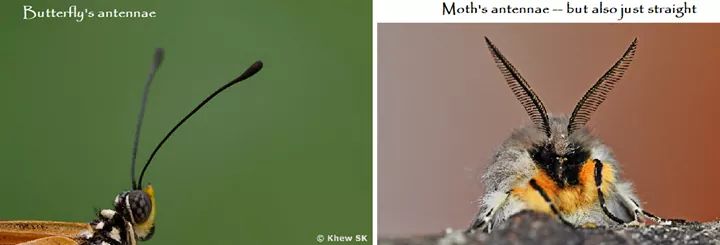
One of the differences to note between butterflies and moths is their antennae.
— Most butterflies have a clubbed antennae (like a weirdly shaped ball at the end of their antennae).
— Moths have usually have straight or feathery antennae.
The adults of both species have a long mouthparts — they suck up liquids through a curled/coiled tube called a ‘probiscus’.
Do you know moths and butterflies’ wings are made from scales? Scales so fine, they rub off like dust. Under a microscope, those tiny scales fit as tightly together, and resemble, roof tiles.
Ethiopian/Kenyan Border – General Africa facts
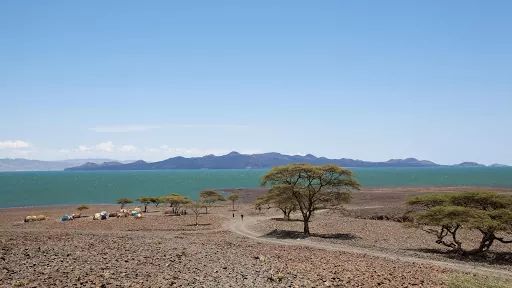
On the Ethiopian/Kenyan border lies the largest desert lake in the world: Turkana. 3 rivers flow into this lake, and usually lakes have an outlet, but here, the waters do not flow out — they remain here. It is so hot here that the excess water just evaporates into the air. Evidence of this river once connected to the mighty Nile river is its reptilian inhabitants — Nile turtles and one of Africa’s largest populations of Nile crocodile — about 15, 000 of them, and some are enormous and reach 18 feet!
Ethipian Wolf and African Squirrels – General Africa facts
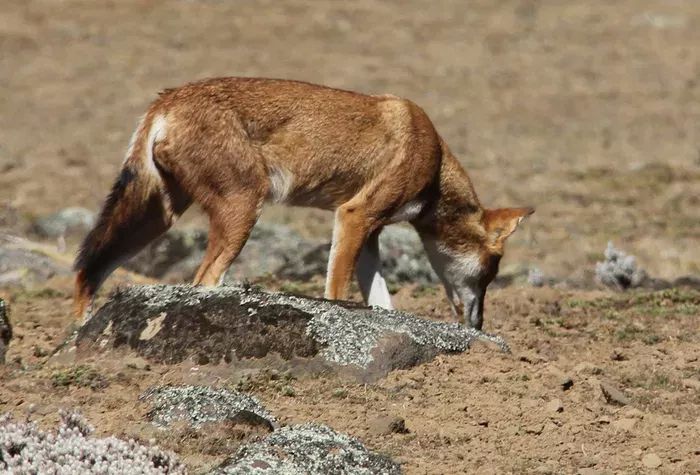
You know that squirrels store their extra food, like acorns, for when they need them. This ‘storing’ behaviour is shared with the Ethiopian wolf. If this rare canine catches more mole or grass rats than it can eat, it buries them in the ground for a later feast.
The Vibrant ‘Gray Wolf’ – General Africa facts

This is also called the ‘timber wolf’ or ‘common wolf’. The fearless and vibrant hunter is native to North America.
They are the largest members of the wild dog family and only fear Tiger and humans. They mostly hunt hoofed mammals — the antelopes, especially deer. They also prey on birds, snakes and lizards. The gray wolf can stay for a week without eating.
They have a highly organized social structure called a ‘pack’ usually of about 12-15 members of one family. This ‘pack’ bonded relationship enhances their hunting and territorial defense abilities. The pack is dominated by an alpha male and only mate with the alpha female within the pack — they are the breeders in the pack. Every member of the pack has a hierarchical role to perform.
They have fur, which ranges in colour, but the common shade is ‘tawny brown’. Females have a smoother fur than males. They make a loud sound in the form of barking known as “howl” which can travel for several miles
Wolves and African hunting dogs

The main hunter of the pack is the alpha female, so besides being the breeder, she also leads and provides so killing/hunting the alpha female is devastating on a pack.
Sea Cow (Dugong) – General Africa facts

A sea-cow has an undemanding and relaxed life. These gentle animals inhabit shallow and warm waters — the Dugong is an entirely marine mammal and lives in the south and south-west Pacific and Indian Ocean.
Its close cousin, the manatee, lives in the Amazon swamps and the winding streams of Florida and West African rivers. In the West Indies, they feed off the plants along their coast.
African Warthog – General facts
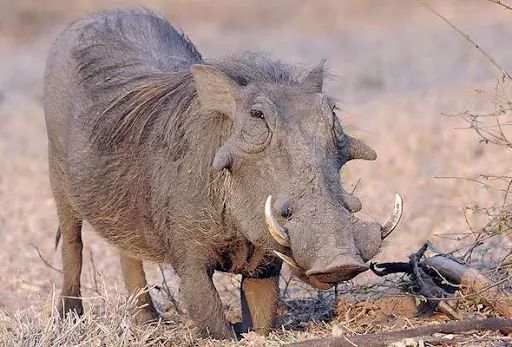
The African Warthog is a herbivore and eats tubers, leaf bases of grass, bark of trees and roots. It eat while kneeling coz it does not have a neck the head is directly connected to the chest. Its one of the ugly five
Fennec fox – General Africa facts
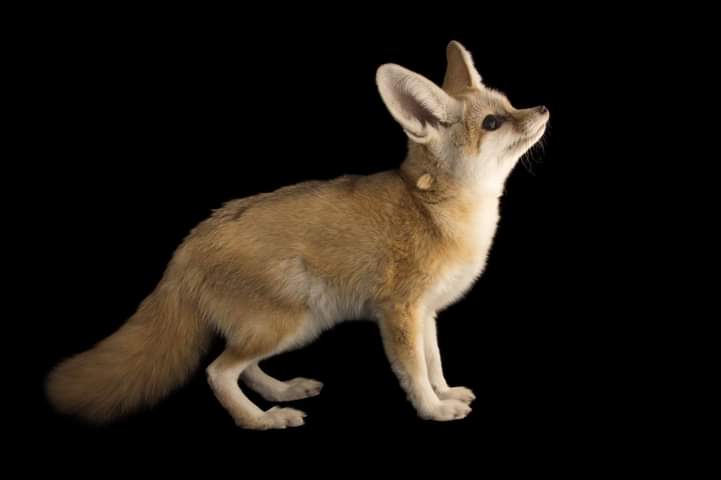
The Fennec fox hunts in an undog-like way. Other canids generally use their sense of smell to locate their prey, but to do that they need moisture in the air to carry scents — the Sahara is too dry for that, so this cute fox relies on its enormous ears to hear insects.
The carnivorous mammal that has the biggest litters is the Arctic fox — it can have up to 18 pups!
Bat eared fox
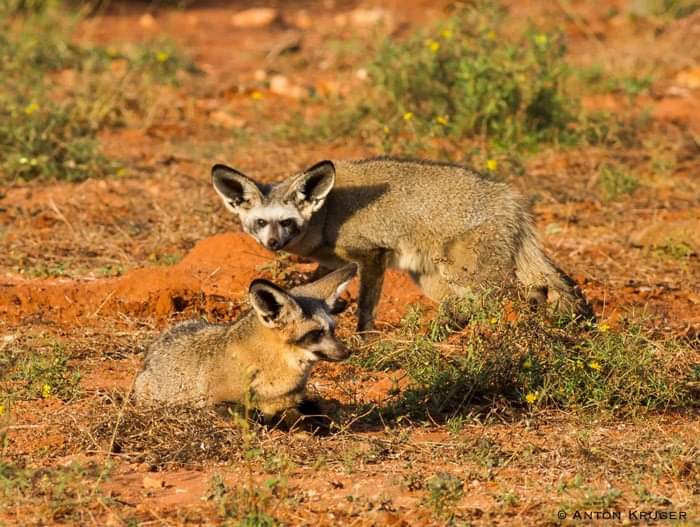
This is another misunderstood animal and often killed for thinking they killed something.
Like the Aardwolf, if you see them eating a carcass, there is a 99% chance they are eating the insects found between the flesh.
The majority of the bat-eared fox’s diet consists of small invertebrates such as ants, termites, spiders, scorpions and crickets. They will also eat small birds, mammals and reptiles, and even desert truffle.
Rabbit General Africa facts

When you see a pet rabbit eating its own poop — do not stop it and yell. “Disgusting!” This is a perfectly natural and a very important part of their digestion process. A rabbit digests (or eats) the vegetation a second time.
The first time passes through and the partially, smaller and softer digested droppings are quickly eaten again, and this time round it extracts all the important nutrients.
This, usually occurs at night when they are in their burrow, a few hours later, when it is foraging outside, they litter the ground with their normal, drier droppings (for good this time).
Striking differences between Hares and Rabbits – General Africa facts
Some people know, but most people, including students of wildlife ecology don’t know the differences between a hare and a rabbit. They look similar but they are entirely different from each other. Although they are of the same family — ‘Leporidae’ but don’t breed with each other in their natural habitats.
Some of the striking differences between them are:
- Hares are larger, possess longer ears and less social than rabbits. This behaviour of being less social by the hares came about the term “harebrained” — meant as an insult to a low mental capacity individual.
- Rabbits run slower and always prefer to hide in burrows, but hares run much faster and cover a distance of 60 Km/hour. This speed makes the hares “poor pets”.
- The gestation period of rabbits is about 33 days, they give birth to their babies blind and without any fur, but hares have about 42 days gestation period, give birth to their babies with fur and opened eye
Leaves – General Africa facts
Leaves are extremely poor food, and contain cellulose (Cellulose is the main substance in the walls of plant cells, helping plants to remain stiff and upright). No animal, that has a stomach, can break it down and therefore, some animals have adapted — like the gorilla, as leaves are the main part of its diet, has digestive bacteria that can break it down.
Another point to note, is that the sap (juice) in leaves has little nutritional value and is not that much, anyway. Cellulose makes up the biggest part of the leaf.
So, all animals that eat a large amount of leaves have plenty of bacteria in their digestive system to help them digest this tough vegetation — they also take a long time to digest.
Leaves also have a low energy content, and once again we mention the gorilla as an example (they are, after all, great examples) — luckily, the gorilla does not move around that much so hardly uses energy!
Grasses
Grasses keep most animals alive — the herbivores feed off grasses and the carnivores feed off the herbivores. So, grasses are important and they have evolved to protect themselves in wonderful ways to prevent their disappearance, and that has a domino effect on ecosystems. The most noticeable is those long strands running along the ground. The best example of that is Kikiyu grass. When you pull one clump out, a whole lot trails with it — all joined by a long stem.
They grew these long horizontal stems so close to the ground, they are often hidden to prevent sharp teeth or muscular muzzles nipping/eating them. These stems are important, because from that new grass sprouts and those grow and feed the hungry herbivores.
All grasses are tough to eat and digest, so the animals that survive eating this vegetation, all have strong teeth to grind them down into smaller pieces — which make this vegetation, or any food, easier to digest. However, some animals have something extra… A compartmental stomach, where a section/s is used to further the chewing/digestion process before it goes into the intestines. An example of that is when some animals relax to chew the cud.
Mole Rats – General Africa facts
Mole rats are smart and considerate. When they come across a juicy root or tuber underground, they make sure they do not eat the entire root or tuber — or a big part of it. They eat only a little so that the plant still grows and offers them an almost regular supply of food.
Mole-rats are interesting in that they do not really use their front teeth for food, but for making tunnels, which they are brilliant at. For this reason, their front teeth protrude (stick out of their mouth more) and are longer than other rodents. However, they have another great quality to that mouth. Their lips. Their furry lips are situated behind those teeth, and therefore, they can close and seal the mouth to prevent dirt and sand entering.
Wild Animal Eyes General Africa facts
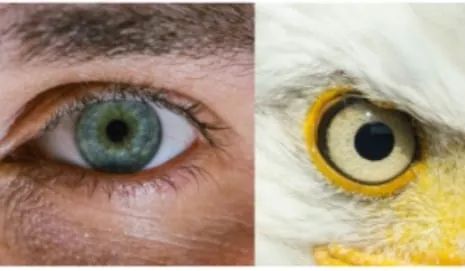
The shape of an animal’s pupil gives you a good idea of where they belong:
- The horizontal pupils are great to always keep the ground in focus and have a panoramic-view to see approaching predators. So, a prey animal.
- The round pupil, generally animals higher up from the ground have them, like gorillas and elephants. Some predators also have them, like eagles, that need to pinpoint prey from great distances.
- The vertical pupil, ambush predators have them as this shape allows them (like cats can sometimes narrow their round pupil into this shape when stalking) optimal judgement of distance.
Eagle’s exceptional eyesight
Eagles have one of the strongest eyesights in the animal Kingdom. Their sight is 4-8 times stronger than that of an average human. The size of the eye is known to be larger than its brain, in terms of weight — not just the size. It can spot an animal about 3.2 Km away. Hence, any sharp-sighted human has always been referred to as having ‘eagle eyes’.
- The size of their eye is roughly the same size as a human’s eye.
Elephants and Rhinos General Africa facts
Elephants and rhinos are so important to clear land, and what we see as destruction; the ecosystem loves it. Let us take for example a lovely patch of grass out in the savanna. The wind blows a seed from the forest, and this seed lands on their ground. It takes root and grows and grows. The poor grass needs all the water it can get, especially in the dry season, and here is this bush or young tree (a sapling) stealing its water.
However, what is worse, its spreading leaves are also taking the grass’ light. The grass retreats from its shade to grow in the light, leaving a bare patch of earth under the bush or tree. Now, imagine there are a few more.
The bushes or trees continue to grow, causing more herbivores to suffer with less grass to eat. However, nature balances it and brings in the elephants which are big and powerful enough to tear down trees and black rhinos to feed on the shrubs. Also, they all — including white rhinos, are big enough to create pathways and trample bushes that are not meant to be there.
African Grazers General Africa facts
Wildebeest, zebra, gazelles and hartebeest are often seen grazing together and we automatically believe they are eating the same grass. They are not. Each species has its favourite food and often they do not like the different plants/grasses their close neighbour is eating, and some prefer long grasses — like zebra, and some prefer shorter grass — like the wildebeest and even shorter for the hartebeest, and the most gazelles like the new shoots of grass.
They also differ in the age of the plant — some prefer the new shoots — like some gazelles, and some prefer the older plant or grass like the zebra.
So, none of them are competing for the same food. There is no competition and that is why they get along with one another so well!
Eggs General Africa facts

Eggs have to be waterproof to survive, and nature ensures that happens. On their way down, the eggs pass through a duct that has special glands in its walls and they secrete a fluid and that hardens into hard shell, or parchment (like in some reptile eggs) before the egg greets the world.
Birds lay eggs, and that they inherited from reptiles. Some species of reptiles can do both, actually lay eggs or have the eggs develop in their body and give birth to live young, like certain sharks, snakes, seahorses (examples), but not birds. Birds are different, and this makes them unique among vertebrates (‘vertebrates’ are animals with a spine), because all birds lay eggs.
Bonsai Apple Tree – General Africa facts
Another fascinating photo from ‘Our Earth’. A little Bonsai apple tree. Although it has been pruned and trained to grow like a perfect, miniature tree — it still bears fruit of the regular size! Bonsai trees (miniature trees) are quite capable of growing full-size fruit which you can eat.
Genet – General Africa facts
The solitary Genet is one of the few animals that can travel through the trees like water running over rocks. They look as if they are flowing from one branch to another as they move with such grace, speed and agility because of their sharp claws. They keep them so sharp because they can retract them into their paws to prevent them from becoming blunt.
Otter – General Africa facts
Although they look like they practically live in water, most species of otter spend more time on land.
Elephants and Giraffes General Africa facts
Although the African elephant is heavier, the giraffe has the largest heart of all living land animals. It weighs 11 kg (25 pounds) and 24 inches long (61 cm).
Elephants, like giraffes, do not have ‘blood-battles’, but have fights of strength. These fights look fierce, but only rarely is a rival killed or seriously injured (a tusk might be broken).
The elephant has the largest brain of all living land animals.
The ant that sings – General Africa facts
There is another predatory ant in Africa — called the ‘megaponera’ ant (this is not the ‘driver’ ant, but also rather vicious). The easier name to remember is the ‘Matebele ant’. They are called that because of the Matebele tribe, who, in days long gone, were aggressive warriors — greatly feared by their neighbours.
Every morning they send out scouts to locate a termite mound. The Matabeles food are termites, and even though the soldier termites are big and powerful, they are no match for the Matabele’s aggression.
A colony of a few hundred ants, some also nearly as big and powerful, follow the scent trail left by their scouts.
They can march for a few hundred metres and make a rustling chorus of a sound — by rapidly jerking their abdomens up and down, and rubbing the front file-like ridges on a spike on their waist. They ‘sing’ until they reach their prize — a termite mound. After their raid, the file home carrying the dead termites and like triumphant warriors after a battle
Spiders General Africa facts
Spiders are not insects — they are built differently. Spiders belong to a group called ‘arachnida’ and this group also includes ticks, mites and scorpions.
Wolf spiders are wanderers and are often seen travelling along the floor to search for prey –that is how they got their name — stalking prey like a wolf. Do not fear them, because wolf spiders are not harmful to humans.
In this family, you also find large spiders like the well-known tarantula spider.
- Tarantulas are not native to Africa.
Primates – General Africa facts
Many animals use their limbs for grabbing things — but none are as dextrous at it as those of the higher primates, like monkeys and apes. Their fingertips can pinpoint surfaces and are highly sensitive. This together with a larger brain, in comparison to their size, makes them quite capable of manipulating objects around them.
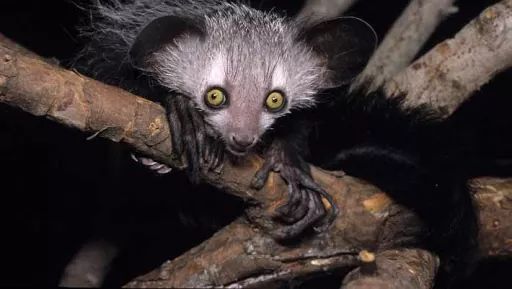
The largest nocturnal primate in the world is found Madagascar, and it happens to be the strangest looking one — the harmless and mysterious aye-aye (related to lemurs).
Pygmy Shrew General Africa Facts
The smallest mammal on the planet is the pygmy shrew (also known as the Eurasian shrew), and so tiny it battles to fight a beetle.
- This is a widespread shrew of northern Eurasia. It is the only shrew native to Ireland.
Classified as a mammal of ‘least concern (conservation status).
Brown Rat General Africa facts
The most widely spread mammal in the world is the brown rat (also looks grey), but it did not reach that status on its own — it only reached that milestone with the help of another omnivore: The human.
Grasslands Names – General Africa facts
Grasslands in different countries are each called something else.
- In South America, they are called ‘pampas’.
- In North America, they are called ‘prairies’ or ‘plains’.
- In Europe, they are called ‘plains’
- In Asia, they can be called ‘plains’ but also ‘steppes.
- In Africa, they are called the ‘savannas/savannahs’.
Frogs General Africa facts
We think of frogs and immediately imagine near water, or perched on a lily leaf… Not the rain frog. This little frog stays away from any kind of pond, puddles, permanent water. It dislikes them so much, they have a bit of a phobia about them. Understandably so, as they would never be able to perch, like other frogs can on aquatic vegetation. Even when not puffed up (they only do that for defense), they are still too rotund (round) to keep balance — even the smallest ripple can knock off and send the little frog into the water.
Frogs are not Toads
Both frogs and toads are amphibians — which means they live in both water and on land. Although, they both belong to the same Scientific classification — Order Anura, they however, have striking differences on a closer examination. Some of those differences are:
- Frogs have longer legs with a smooth slimy skin while toads have shorter legs with a dry rough skin.
- Toads lay their eggs in long strands while frogs lay theirs in clusters like a bunch of grapes.
- All toads are frogs, but not all frogs are toads. This is because, frogs only survive in water and near water environments, but toads in addition to water, also move around in drier environments like gardens.
- Male frogs guard their eggs, but toads don’t guard their eggs, they rely on their poisonous secretions to defend intruders.
- Some species of frogs are edible and taste like fish, but toads are not edible because of the poisonous glands on their skin.
Arizona spadefoot
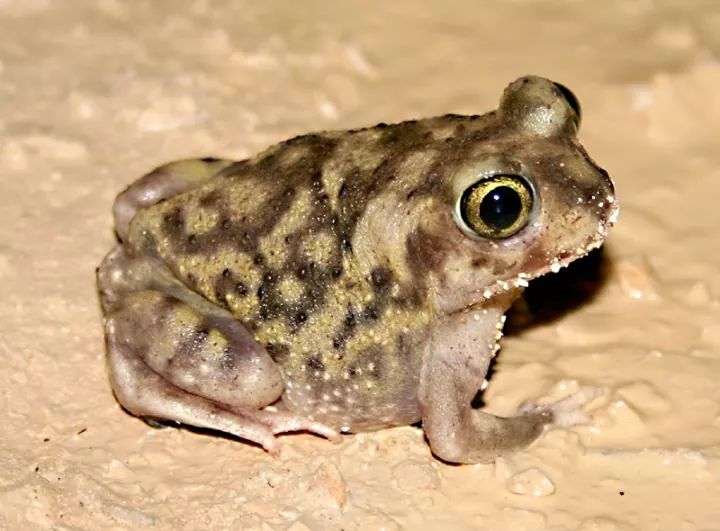
The Arizona spadefoot toad has amazing skin. It is dry in its area, especially in dry times, so it has a cacoon-like skin to prevent it drying out and burrows into the soil during the dry period and digs out once the rains have arrived the following summer.
Insects General Africa facts

Some insects mimic others — they look so like them even some expert entomologists (study insects) sometimes cannot tell the one copying apart from the real one. They usually do this to fool predators — for example, you might get a harmless insect that looks like a highly poisonous insect and this is so that predators leave them alone.
The first creatures to fly were insects, and that was about 330 million years ago. However, before that they dominated the earth for about 70 million years. So, insects have been around longer than most realise — about 400 million years!
Cape Fur Seal – General Africa facts
The Cape fur seal do things a bit differently… The bigger the bull does not mean it gets the most females, as we would expect, but the better ‘seafront property’, but that is where the ladies prefer to hang out — so, that is why we use the word ‘bit’. Breeding bulls (male seal) are big — about 200 kg (440 pounds)
Leopard Seal General Africa Facts
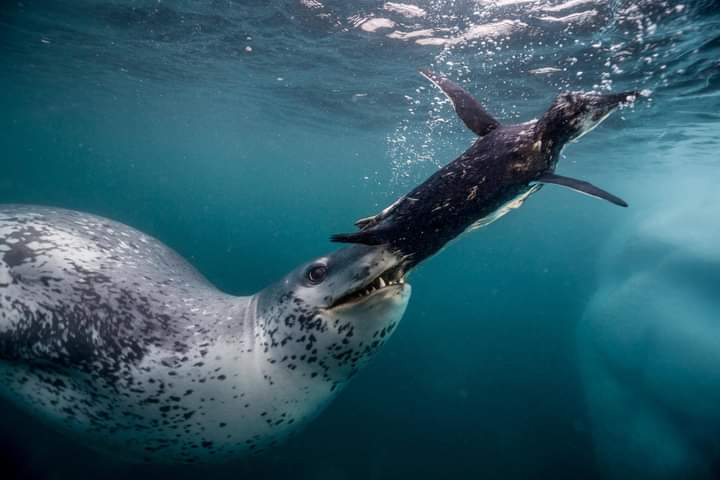
Like a cat, the leopard seal usually plays with its prey before eating it.
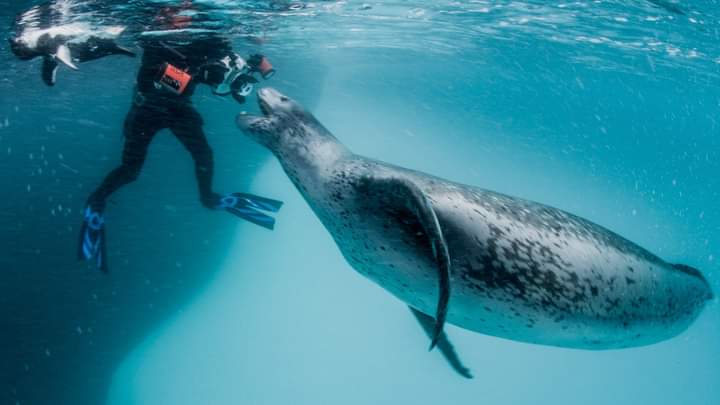
The leopard seal is the largest seal found in Antarctica and preys on penguins, but also hides from view and waits for young seals to take their first swim. Many young seals (about 80%) bear scars from their frightening encounter with the huge leopard seal. Although they do not hunt humans, swimming with them is a scary thing for a photographer as they will often try to bite the shiny camera lens — thinking it is a rival that is competing for their prey.
Bovids General Africa facts
The Bovidae comprise the biological family of cloven-hoofed, ruminant vertebrates that includes bison, African buffalo, water buffalo, antelopes, sheep, goats, muskoxen, and domestic cattle. A member of this family is called a bovid.
As we know Bovids are the largest family of hoofed mammals. In the world we have 279 different species in the world. In this family you have one of the biggest size difference between species of ungulates (odd-toed ungulates — like rhinos, as they have 3 toes and even-toed ungulates — like antelopes as they have two toes).
Why we say there is a huge difference in the sizes of species is because we find the Cape buffalo, some can weigh 1 tonne, and then way down the smallest antelope in the world, the Royal antelope found in West Africa, may only weigh 1.5 kg (3.3 pounds).
Thomson’s gazelle. Some may say, but that is a gazelle; not an antelope.
Gazelles are antelopes.
Antelopes and buffaloes belong to the same family: Bovidae, the biggest and most diverse family group of hoofed mammals (called ‘ungulates’).
Mosquitos General Africa facts
Mosquitos have 47 teeth.. Mosquitos have the same basic mouthparts as other insects and like them lack teeth. However, the mouthparts of female mosquitoes have evolved into elongate mouthparts that are specialized for feeding on vertebrate blood. When the mosquito bites, the structures that pierce the skin consist of a pair of needle-like structures called “stylets.” Each stylet is made of a mandible, which is pointy, and a maxilla, which has ridges like a saw
Ox-peckers – General Africa facts
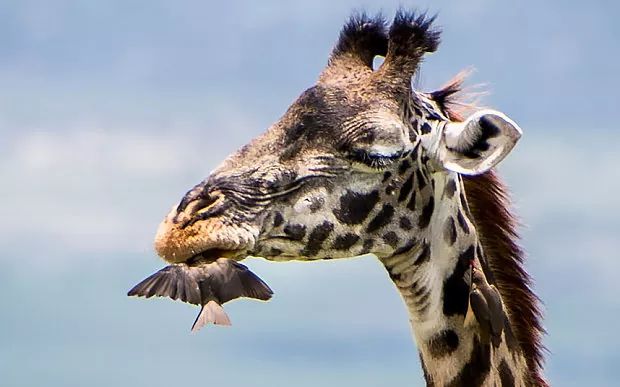
Want to see something strange?
It looks like this giraffe is eating an ox-pecker…
It is not; the ox-pecker is cleaning its teeth (eating the plant matter between its teeth).
You will usually find ox-peckers near, or on animals — ridding them of annoying parasites. Some of these birds have red bills, and some have mainly yellow bills — hence the different names. Red-billed oxpecker and yellow-billed oxpecker.
However, they do prefer blood, but these birds do not make wounds, but they sure take advantage of the wounds caused by an infestation of ticks, battle wounds and so on. They try to keep these wounds open, so that the blood still flows — however, animals, especially hippos, have a thin skin, so do not like it and get rid of them when the pecking gets a bit much. So, although these birds are brilliant in relieving the hosts from parasites — they are actually parasites, themselves.
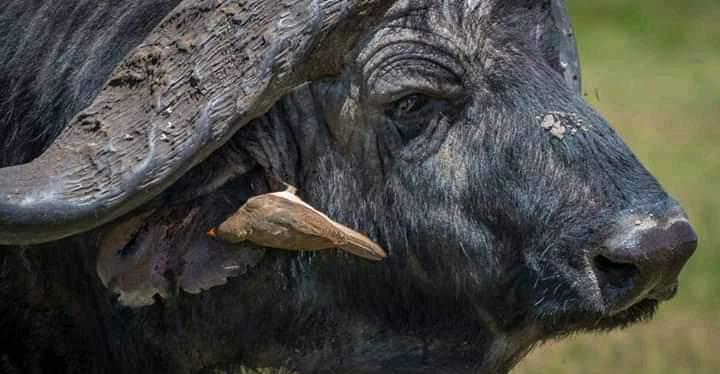
The oxpeckers have a symbiotic type of relationship with the buffalo. They help these animals in limiting the parasites on their body surface.
However, the oxpecker will pick the wounds of animals keeping them open and drinking the blood of animals.
An adult oxpecker can consume 100 swollen ticks in a day or 12,000 of their larvae.
Their legs are short to get the bird close to the skin. The feet is actually adapted for clinging to the sides of the herbivore
The Aardvark – General Africa facts
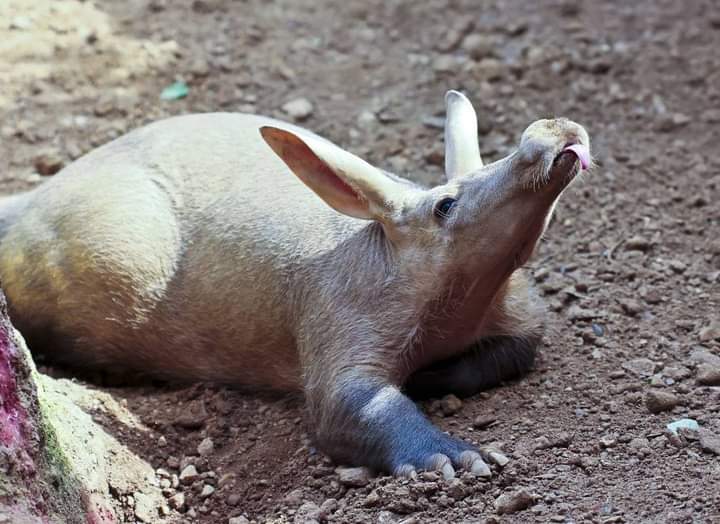
The Aardvark has powerful forelegs, and also strong and tough claws. These features allow them to dig into the earth at a phenomenal speed — these unusual and gentle animals are not anteaters as we know them, but they belong to their own family, and yes, they also eat termites and ants… But, this one is a little different, as it is the only animal that feeds on a kind of underground fruit — The Aardvark cucumber.
- It is not at all shaped like a cucumber!
Living in Captivity Vs Wild – General Africa facts
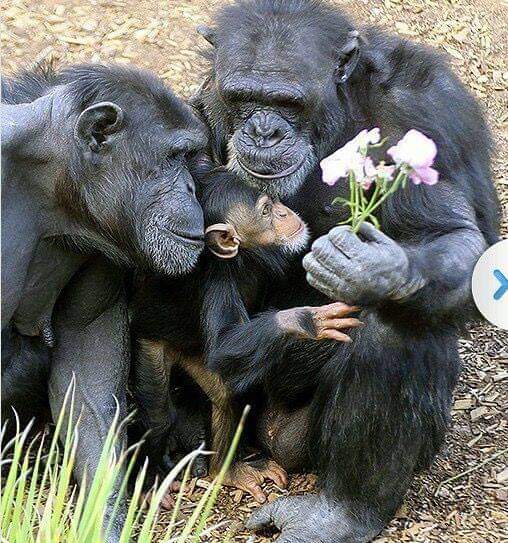
Some of you may wonder why animals live longer in captivity than in the wild? If you think about it, it makes complete sense. Animals in captivity are in a safe and controlled environment (should be, but unfortunately there are a very few out there that are terrible places for any kind of animal).
The captive animals do not have to look for food, hunt, open to be hunted/predation, the harsh climates they are not exposed to, and a few more benefits. This all leads to them living full and healthy lives — not possible out in the wild.
The Congo Basin – General Africa facts
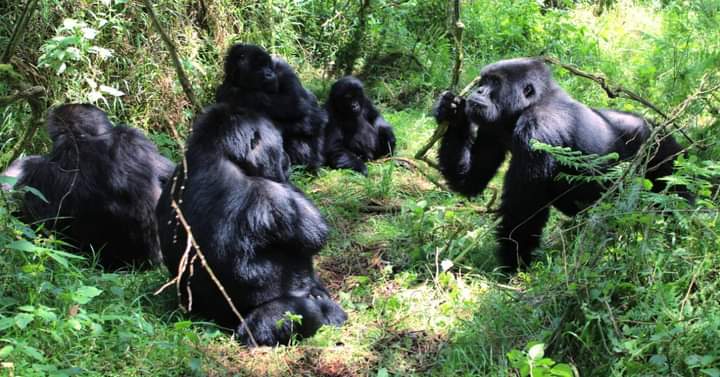
The part of Africa that has the most animals also has the most biodiversiy. ‘Biodiversity’ is a word which means ‘a variety of plants and animals.
This area straddles the equator and is the Congo Basin.
- Gorillas are probably its most popular inhabitants.
Conservation of Wildlife Specimens – General Africa facts
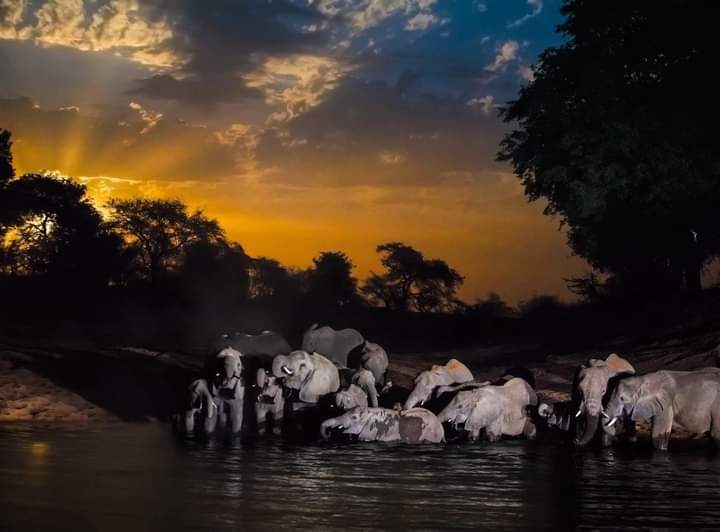
When we mean wildlife, most people only often think about the fauna (animals), but it also includes the flora (plants). So, the protection of wildlife fauna and flora for sustainable benefits is termed ‘conservation’.
It can be ex-situ or in-situ conservation. Ex-situ conservation entails “off site”, that is, protection of wildlife specimens outside their natural environment. Examples of such are: conservation practices in Zoos, aquaria and botanical gardens — usually a confined environment to save some endangered species from possibly becoming extinct.
In-situ conservation is “one site” –the practice of protecting wildlife specimens in their natural environment — here, there’s no confinement, wildlife interactions are not limited. Examples of such are: National parks and game reserves.
*The conservation statuses of wildlife species by the International Union for the Conservation of Nature (IUCN) is to keep us abreast on their state
Deers Vs Antelopes – General Africa facts
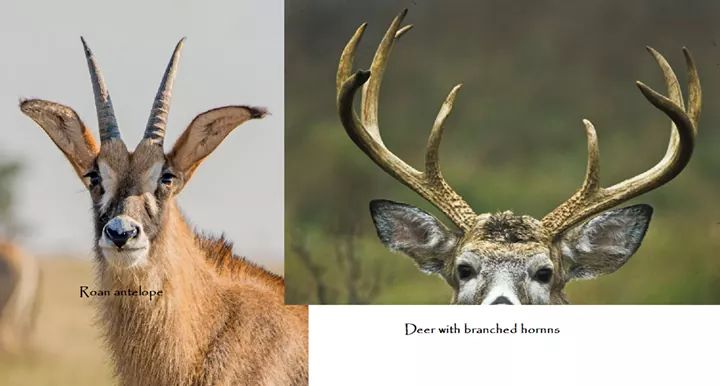
Sometimes we might get confused between antelopes and deer — there are a few differences, but the easiest to see is by their horns. Antelopes do not have branched horns.
Pronghorn General Africa facts
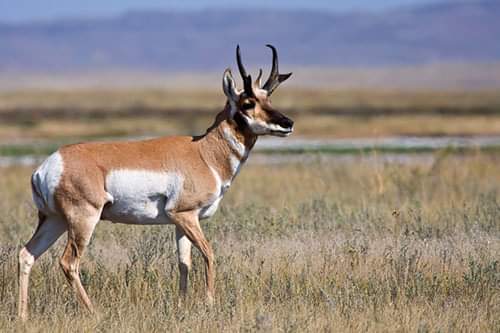
The Pronghorn is sometimes called an ‘antelope’. It is not an antelope, it belongs in its own family. A family different to antelopes.
- Reminding of above post — an antelope does not have branched horns.
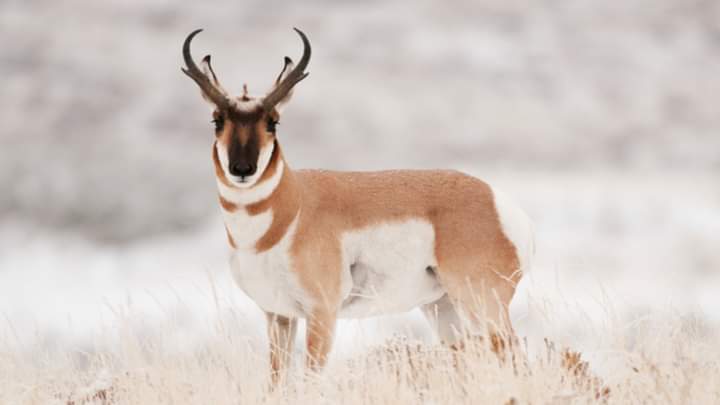
A pronghorn is native to North America, and it is related to a giraffe because a giraffe is an ungulate (a hoofed mammal). So, therefore, all hoofed animals are related, but in different families. Like the pronghorn, giraffe, goat, sheep, various antelopes and do on, all are in different families.
- Antelopes are only found mostly in Africa, but some also inhabit Eurasia.
Mammalian Carnivores – General Africa facts
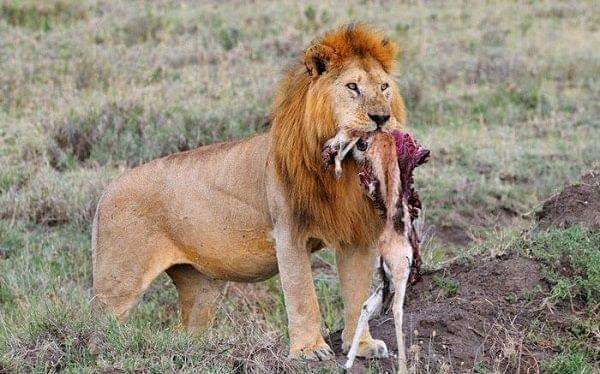
All mammalian carnivores belong in two divisions — cat-like and dog-like.
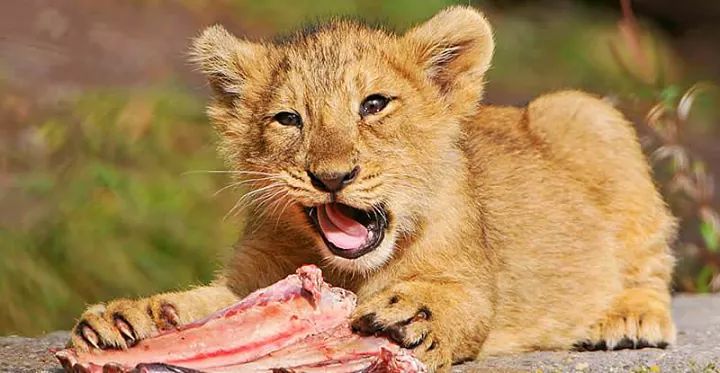
The word ‘carnivore’ as a classification belongs to a group of supposedly ‘meat-eating’ animals that causes confusion. One expert, let us say, who lectures and studies this order of mammals might say one thing, but then another equally qualified will say another, similar but different observation.
For example, in the order ‘Carnivore’ we usually believe all mammalian (mammals) carnivores have carnassial teeth, those strong and sharp teeth behind the canines, and in front of the molars and used to cut through meat, are not found in Aardwolf (eats almost entirely termites) or Giant pandas (mainly eats bamboo) — despite what you think, they are classed as carnivores. Confusing, hey?
And then… Not all carnivores eat meat, like the jackal — its diet consists of meat and fruit, but it is a carnivore and not an omnivore.
The classification and evolutionary history are something still hotly debated, still discussed and still disagreed upon by scientists.
Wildlife Population Classification
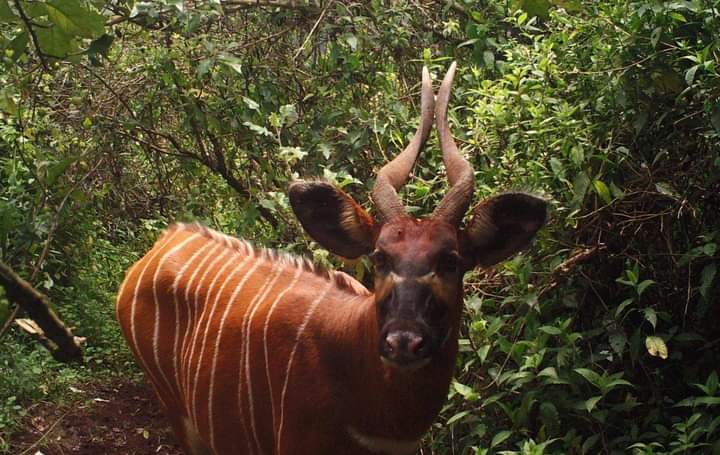
The IUCN , places animals in different categories or classifications depending on their population, but tied into if they are in threat of extinction. Those categories/classifications from least worrying (although, any of these listings is extremely troubling) to extremely worrying:
- Near threatened.
- Vulnerable.
- Endangered.
- Critically endangered.
The IUCN (WORLD’S LARGEST CONSERVATION UNION — VERY IMPORTANT INFORMATION AND STANDARDS) has 3 conservation objectives:
- Secure biological diversity, make sure all the species, animals (fauna) and plants (flora) keep the ecosystems alive and healthy.
- To use the world’s recourses wisely, not stripping coal, or minerals and destroying all life.
- To guide/show human communities towards a good quality life, that is in harmony (agreement) with nature.
Bongo General Africa facts
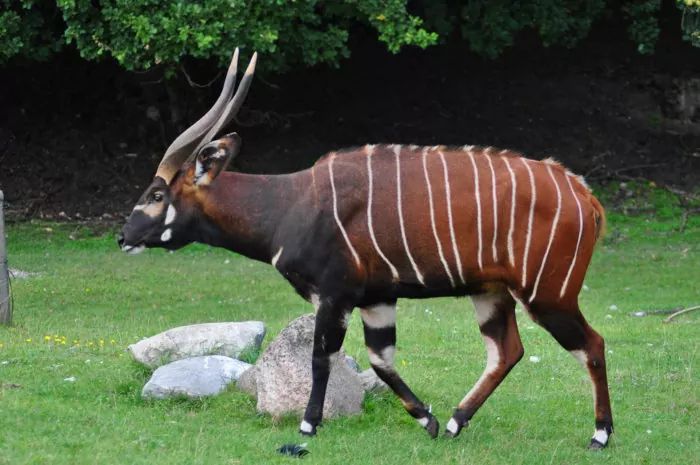
Both Bongo species are forest antelope and both are endangered — one more than the other and that was the Eastern or mountain bongo.
- The Western or lowland bonga. The one we see the most. It is found in the forest zone of the equator, and in some areas to the north of it — this bongo is endangered.
- Mountain or Eastern lowland bongo. It occupies a small part of Africa. A tiny part — the mountain forests of Kenya. This is a very rare antelope and much seriously endangered. This bongo is critically endangered.
Termites – Social Engineers
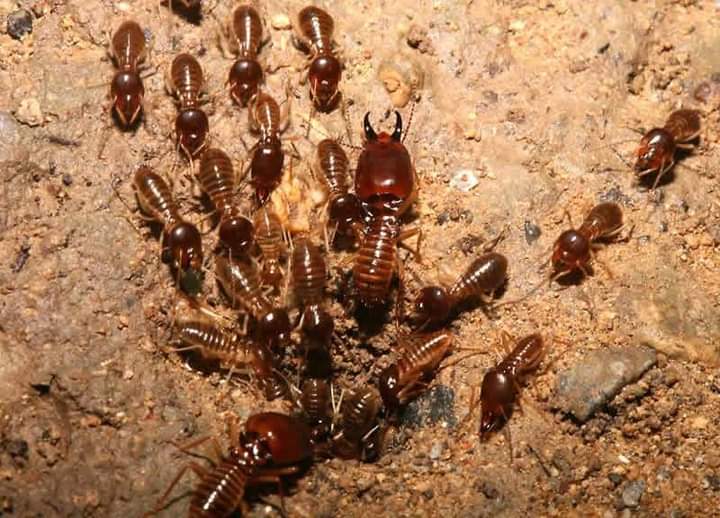
In wildlife ecology, termites are important biological engineers due to their roles in aerating the soil (getting air into the soil) and increasing humus content to become richer and ensure healthy soil and crops (compost — termites get dry leaves and other organic materials into the soil. It is an extremely important part of the soil — besides releasing important nutrients to keep the soil healthy, it also helps keep the moisture and minerals in the soil). Termites are known as social insects and bioengineers.
Termites are called social insects because they exhibit a functional division of labour among themselves. They are divided into four subgroups known as castes– Soldiers, Workers, Queen and the special King, apart from the winged reproductives. The soldiers attack and defend their habitat, the King fertilizes the numerous eggs laid by the Queen and the workers build their habitat (house) known as TERMITARIUM or ANTHILL.
Termites don’t sleep, they are awake 24 hours constantly carrying out their different activities.
Marsupials
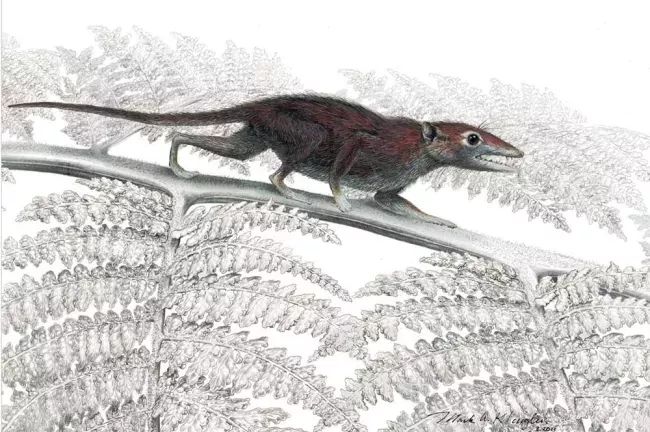
The earliest mammalian predators were marsupials. An opossum-like creatures with pointy snouts and big ears – small about the size of smaller rats, shrews and mice. These animals lived a long time on earth, and dominated the southern continents for 30 million years.
Cats – General Africa facts

There are 36 wild cat species found on earth, and they are found on every continent except Australia and Antarctica.
African Dik-dik General Africa Facts
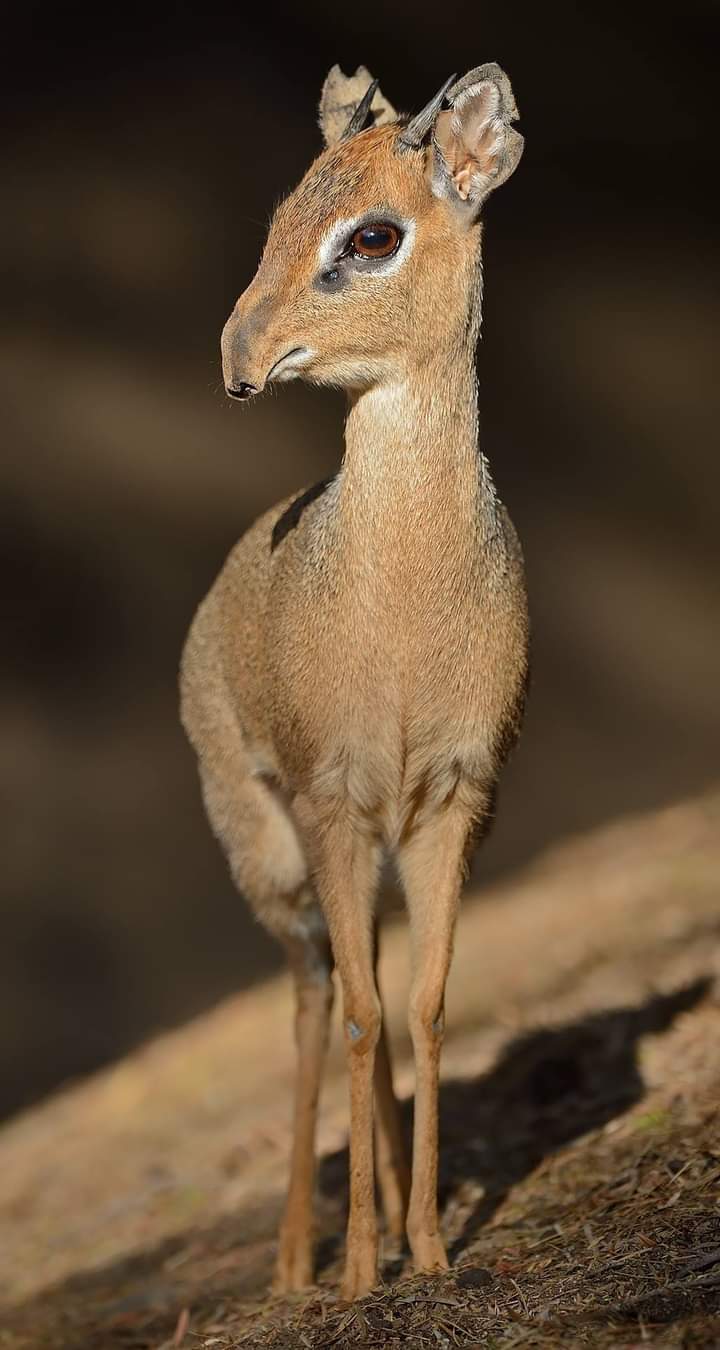
Dik-diks are one of Africa’s most adorable looking antelopes. And their most distinctive physical characteristics is their long and pointed snout. In some sub-species this can look like a little trunk — similar to the South American tapir.
Dik-diks live in hot and dry places — in the bushlands of the Horn of Africa, the Eastern and Southwestern part of Africa, they need to keep cool, and that is when that elongated (long) snout comes in…
It is a major mechanism for cooling the blood. From the other parts of the body, arterial blood flows to the moist membranes in the nose and mouth.
It pants quite a bit, which causes a continuous stream of air to pass over these membranes and ensures cooler blood reaches the brain.
When we see an antelope being born, we notice the first part of the calf, or lamb, we see are the hooves. However, the dik-dik baby is born differently — its nose arrives first and it can do this because its legs are held firmly against its body and the baby is tiny — When they are born, they only weigh a tiny 560 to 680 g.
Grey Rhebok – General Africa facts
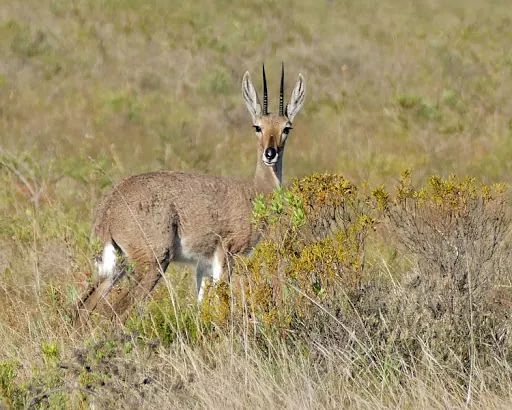
The grey rhebok is native to South Africa and as a grazer prefers mountain slopes with a good layer of grass. Although the rams (males — smaller so not called a ‘bull’ like bigger antelopes) they prefer not to fight. When a ram has to defend his territory he uses a kind of advertising. He will approach the intruder that is invading his territory and approaches him slowly, stamps his front hooves and snorts loudly. Usually this shows the intruder his presence is not tolerated, and he leaves. If this ‘advertising’ does not work, actual physical fighting may occur.
Banana climbing mice – General Africa facts
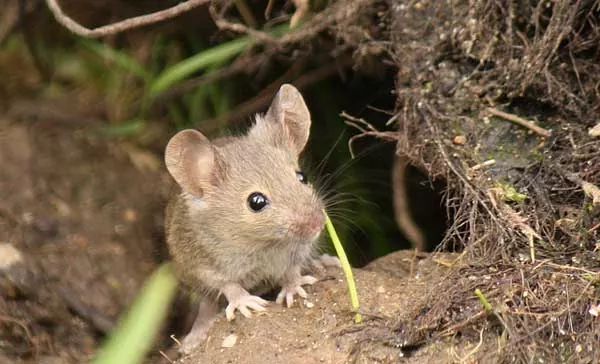
Banana climbing mice is a great pollinator and working with the fruit bat also has pollen sticking to its fur as it goes along to other flowering fruits and pollinates them. Without these incredible pollinators (both species) that area will not be bursting with fruit. The banana climbing mouse (Dendromus messorius) is a species of rodent in the family Nesomyidae. It is found in Benin, Cameroon, Democratic Republic of the Congo, Nigeria, and Togo. Its natural habitat is subtropical or tropical dry lowland grassland.
The final one (today) relating to the banana climbing mouse. With the help of the fruit/ mega/ fox bat, and the banana climbing mouse, they are responsible for pollinating the flowers so the fruit can grow… But, fruit need trees to start, and this is when animals like the potto come in.
Besides eating insects, a big part of their diet is also fruit and these helpful primates scatter seeds in their dung throughout the forest — enabling the growth of trees — the fruit bats also do this, but the pottos are better at it because they have strong jaws and can bite into the really tough fruit.
Without these important animals, that lovely forest and fruit to feed the animals and people will not exist.
Hedgehog – The Prickly Ball
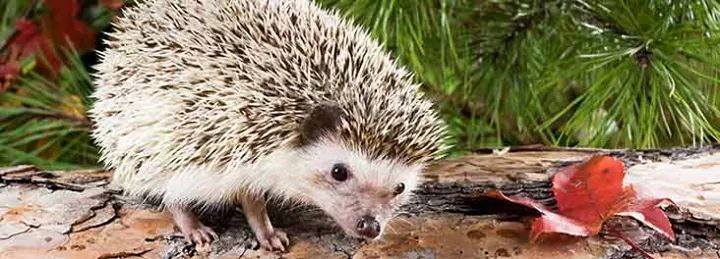
This gentle mammal is found in Africa and other continents. There are 17 species of hedgehogs in five genera (singular– genus). The name is derived from its foraging habit on hedges while looking for insects and worms, and it makes piggy grunts, hence, “hedge – hog”. They rely on their sense of smell and hearing because they have poor eyesight.
They have stiff, sharp spines all over its body except the face, which number up to about 5000 in one. As an adaptation, if attacked, it curls up into a prickly ball with the head inside to deter predators.
They are also known as the Gardner’s friend — being kept as pets because they prey on pests. The most domesticated is the African Pygmy Hedgehog. A group of hedgehogs is called an ‘array’ while a baby- hedgehog is called a ‘hoglet’.
*Their conservation status is ‘least concern’.
Duiker – General Africa facts
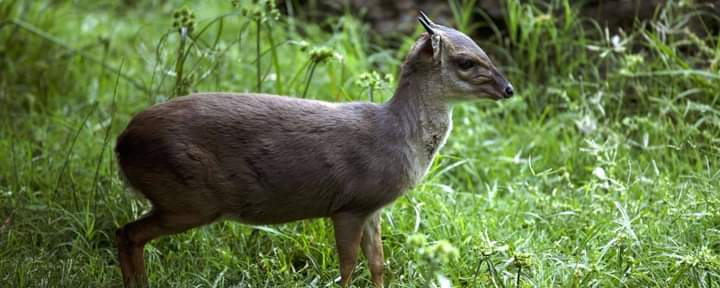
The word ‘duiker’ means ‘diver’ in Afrikaans. This is because they ‘dive’ into the vegetation to escape predators and humans (although we are also a predator).
Wildebeests, Hartebeests, bastard hartebeest (tsessebi) and Hyenas
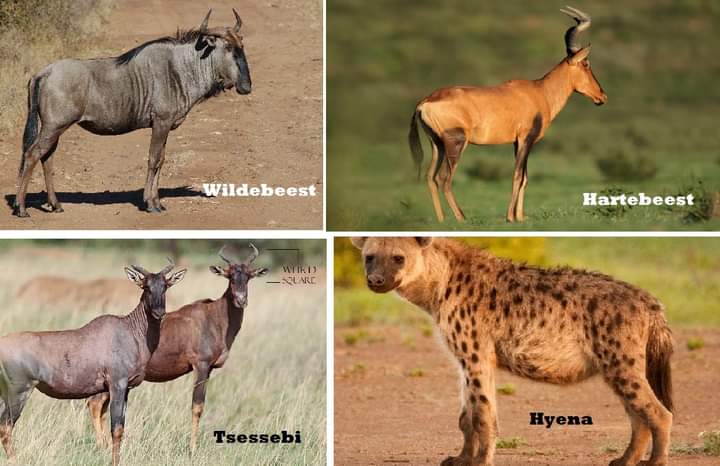
All wildebeests, all hartebeests and the bastard hartebeest (tsessebi), all have sloping backs — not as pronounced as all the hyenas, but still there — this unique design is why these animals have such incredible stamina — the long-distance runners of Africa.
Lemurs Facts – General Africa facts
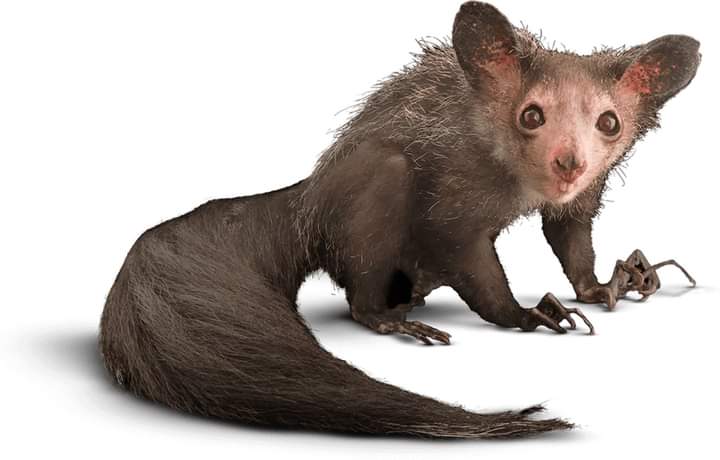
Madagascar has some truly unique and lovely animals. Their cutest and most popular animals are the lemurs, and the most interesting is the one that looks the most bizarre — mainly due to its long finger — the aye-aye. This primate is about the size of an otter and has one long and bony finger on each hand. It is that long because it has a specialised diet and mainly eats beetle grubs hiding deep in the wood. They often cannot escape that prodding long finger.
- This unusual mammal is classified as ‘endangered’.
The fascinating ‘Praying Mantis’ – General Africa Facts
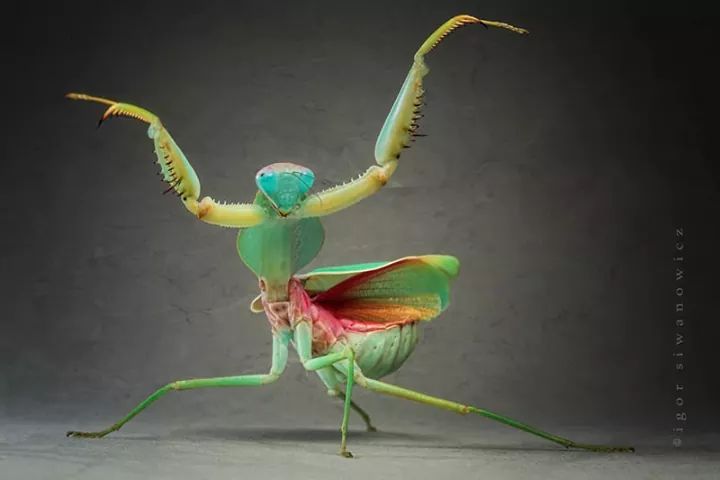
This insect — ‘praying mantis’ got its name from the position of its folded front legs, which appears as if it’s in prayer. This fascinating, carnivorous insect is found all over the world comprising about 2, 400 species in 15 families. There are more species in tropical Africa than in the temperate regions.
They are typically green or brown and well camouflaged among plants for their protection against predators. They have a triangular head (with bulging eyes) which can be turned 180 degrees without turning the body, for looking out for prey and predators. They mainly feed on live food, mostly insects. Their legs have spikes used for pinning down their prey.
Species in the tropics mate all year round. The females, which are usually larger, send pheromones (chemical substance from their bodies) towards the males to attract them. The fascinating aspect of this mating is that sometimes, the head of the male is eaten after or during the mating which last for few hours.
- This behaviour of sexual cannibalism is estimated to be about 25% in the populations of some species, and it does not happen every time they mate.
Komodo Dragon General Africa Facts
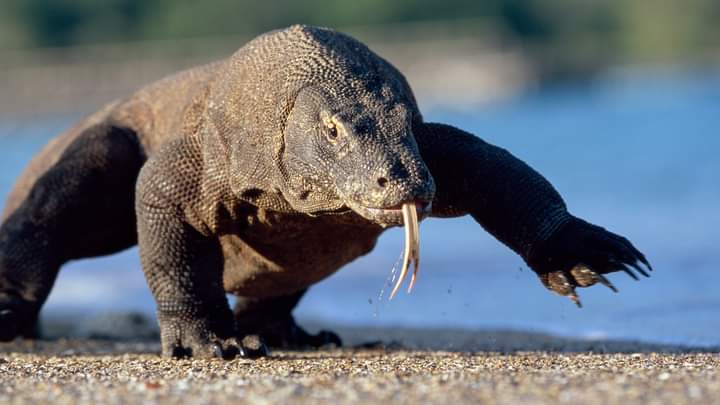
The Komodo dragon is a top predator, a muscular and a heavily built reptile. Also, it is the world’s most powerful and largest lizard. This reptile was only discovered and documented in 1912 — Imagine calmly fishing on a Philippine island and seeing these large, carnivorous animals casually patrolling the beach while searching for prey. This was the first time the Western world heard of this ‘dragon’.
This is an endangered animal, they are native only to the five islands east of Bali– at the point the Pacific and Indian Oceans meet. This is a small area, and out of all the ranges of carnivores — their home range is the smallest. The biggest population is found on the island called ‘Komodo’.
This fearsome predator has the ability to hunt humans and on average, males are about 2.2 metres (including their tail) and weighs about 176 pounds (80 kg) — this is no small lizard.
Polar Bear General Africa Facts

The polar bear is the world’s largest land predator.
- This magnificent animal is in danger of extinction, mainly due to the earth heating up, resulting in reduced ice areas and that means less prey. Polar bears are starving to death, and if you want to believe it or not, the facts are right there to see. The earth does heat up, over many thousands, millions of years, but not at this worryingly rapid rate — this is the Climate crisis, and the stark proof of that is in the polar bear’s struggle for survival.
When the female polar bear leaves her den, after the harsh winter — snow and ice are still everywhere but it is warmer. She has cubs — usually one or two, and she stands at the entrance of her den and sniffs the air — trying to catch the scent of a male, as he will likely kill her cubs.
By this stage she is starving, but her instinct to protect her cubs is stronger than her need to eat and she can wait up to two weeks back in her den with her nursing cub/s, until the threat has gone and they can all leave the den. The polar bear mother has many admirable qualities and this is only one of them. She is listed as being one of the best mothers in the animal world.
The screaming mouse General Africa facts
In the southwestern parts of the US desert lives its most aggressive, vicious, fiercest, quickest and possibly its furriest predator, and this little bundle of fury only weighs a ‘mighty’ 14 grams (half an ounce). This is the grasshopper mouse.
We tend to only think of mice a sweet little animals that only eat grains, grass and similar. Well, this little predator bursts that bubble, because it eats scorpions (and hunts the largest in that area), beetles, ants, grasshoppers and little else.
Besides its ‘meaty’ diet, this little guy also has an unusual way of letting his rivals know where his territory lies, and he uses the same bizarrely-wonderful technique to attract a mate.
This brave mouse stands upright on its hind legs and screams. Yes, you read right. This sound is loud enough to carry to its furthest borders to ward off rivals and attract a mate.
- Forget the photo of wolves howling in the moonlight, because here is a mouse.
What is a home range? – General Africa Facts
A home range is an area where it lives, reproduces and survive; while a territory might be the same size and also used for the same reasons, but the difference is, that those areas are exclusive to a certain species and it defends that area.
So, simply put, a home range they do not fight over, or defend it in another way; they do in a territory.
- Lion’s are the easiest to see the difference — they really defend their territory!
We explained about the difference between home ranges and territories. Now, there may be some confusion when it comes to the leopard… The leopard definitely has a territory, but it adds an extra twist to it because the leopard has a ‘mosaic territory’. This means more than one territory can overlap the other, and a good example of that is the male leopard. He dominates an area, but he allows one or more than one leopardess’ (female leopard) territory to overlap his as he will breed with the leopardess (actually, the leopardess makes sure her territory overlaps his, as the dominant male is likely to protect her cubs because they are his).
Orangutans General Africa Facts
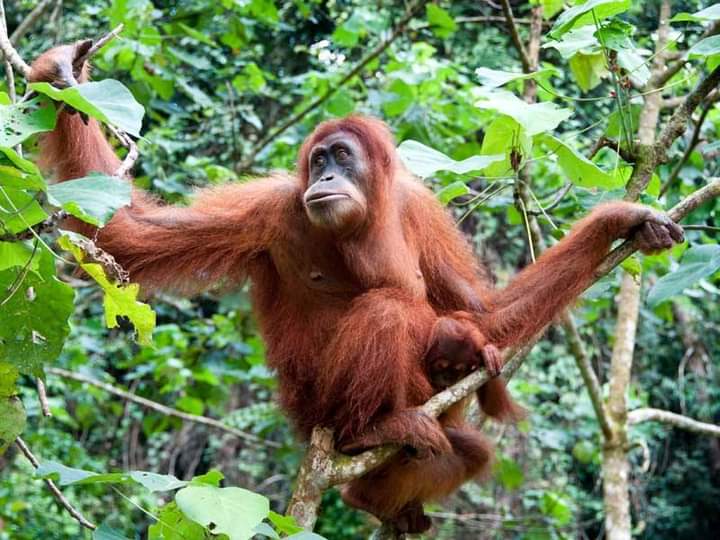
Adult orangutans are lighter than the general gorilla and this is also why orangutans build, every night, a nest in trees; while gorillas build, every day, a nest on the ground.
Why are orangutans so important?
Well, for these reasons and WWF sums it up the best:
‘Orangutans are “gardeners” of the forest, playing a vital role in seed dispersal in their habitats. They live in tropical forests and prefer forest in river valleys and floodplains of their respective islands. Orangutans’ extremely low reproductive rate makes their populations highly vulnerable. Females give birth to one infant at a time about every 3-5 years, so these species can take a long time to recover from population declines. With human pressure only increasing, orangutans face an increasing risk of extinction.’
Orang-utan means ‘person of the forest’ in Malay.
Kangaroos General Africa facts
Just like deer and antelope that live in herds, so do kangaroos, but they are not called herds, but ‘mobs’. Also like them, males fight to win females. They begin with a bit of ‘fist bumping’ with their short front arms, but their true power is their back legs. Those legs are powerful enough to propel them 8 yards in a single jump and they lean back, balance on their powerful tail and kick with their feet. They have sharp claws and they can deliver a deathly blow that can rip open their opponent’s stomach.
When kangaroos are threatened by a predator, they lead the attacker into the water and attempt to drown them.
Sharks General Africa Facts

Sharks cut through the water so smoothly and efficiently, and they also move so fast. This is due to one of their great adaptations: They have special skin that reduces the drag as they effortlessly move through the water.
Barbary sheep or Aoudad General Africa Facts
They look more like a goat than a sheep and genetically speaking, the are more closely related to wild goats than sheep — but they are stuck with that name (sheep and goats are separate species — sheep belong to their own genus and have 56 chromosomes, while goats belong to theirs and have 60 chromosomes). These sheep are native to the rocky, arid regions of North Africa.
Habitat General Africa facts
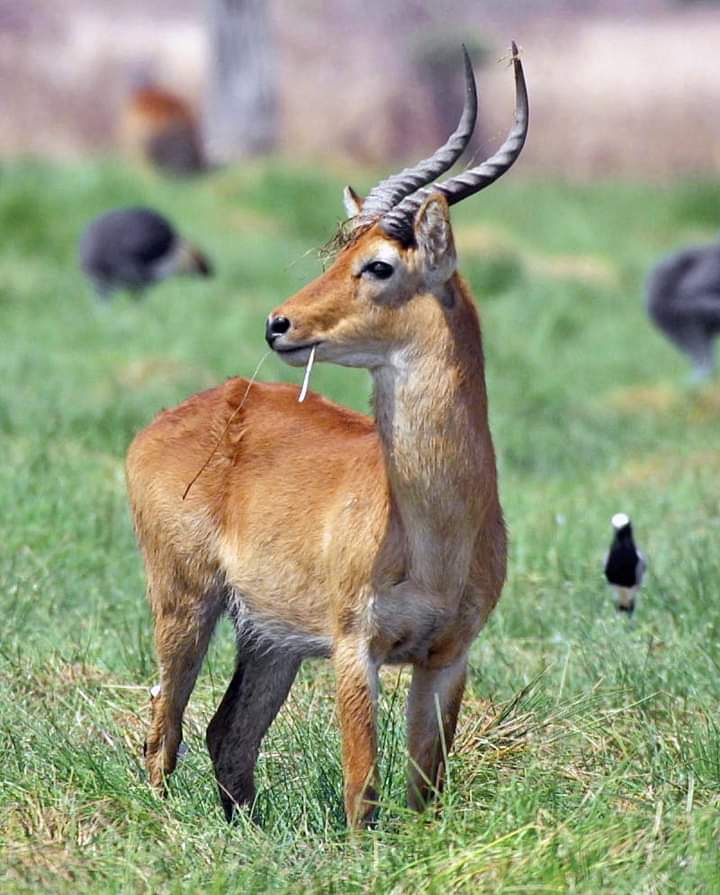
We often hear of ‘habitat’ when describing where an animal lives, so let us make it a bit clearer — A habitat is the natural home of an animal or plant. For example a pukka antelope habitat is marshy grassland, near water. They look similar and live in a similar habitat to the Kob — therefore, they are often considered a subspecies, or some think they are the same antelope. The Kob and Puku are mostly separate species.

Wetlands cover 6% of the earth’s surface and they include swamps, marshes and bogs. They are important habitats to an ecosystem and supports much wildlife — think of the importance of kidneys in the human body. Kidneys are a vital organ, they filter toxins and balance our blood so that it does not poison our system/body. Well, wetlands are the kidneys and the world is the body.
Just like kidneys, they filter out pollutants and keep the ‘body’ (earth) healthy. Unfortunately, many wetlands are being drained to make room for developments and/or agricultural land — robbing the ‘body’ of a vital organ that supports much life, including human life and keeps the earth working well.
A good sign of a healthy wetland is the presence of otters. An otter is an ‘umbrella’ species — if they are not there, that ecosystem might look great to us, but it is dying.
Snails General Africa Facts
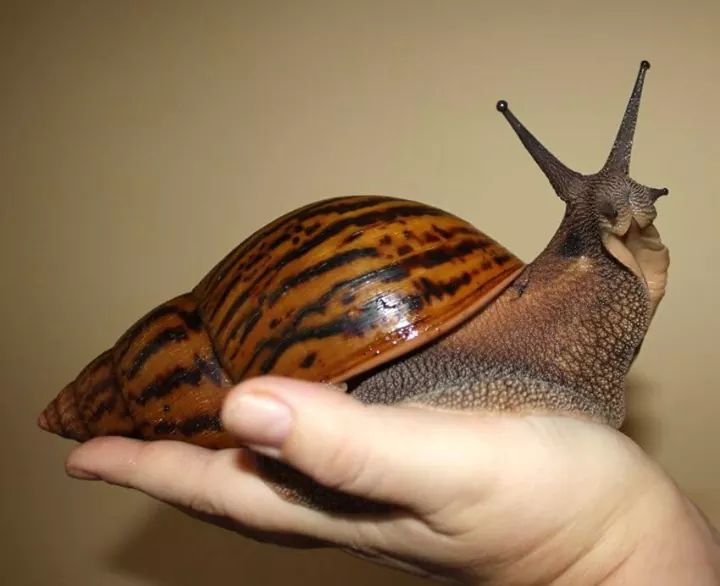
We all know snails and often associahte every slow pace movement as ‘snail’s speed’ but I rather see it as ‘patience’. There are over 50, 000 species of both land and sea snails around the world. They range in different sizes (0.68mm-70cm) and shapes. Sea snails make up the majority of all species. Most of them have gills, but some have lungs.
It will amaze many of you to know that snails have the highest number of teeth of any animal. They have a small mouth, but feed with radula on which many thousands of teeth are lined, depending on the species. The limpet teeth were shown to be 5 times stronger than spider silk.
When the temperature is so dry, snails sleep to secrete enough mucus for their survival. A nap of a snail can range between a few hours and 2 or more years.
They have two eyes, but land snails have more vision than aquatic species. Some underground species don’t even have eyes. They rely on their senses to move around. Again, carnivorous species have more vision than others. Some other species are only able to distinguish light and dark times.
Tiger General Africa Facts

Tiger cubs have the first 1 and a half years easy — their mother provides and if their father is still around — or their mother remains (like the leopard) within part, or all of his territory, he will also provide, but not food and more nurturing but defence.
The first to leave are the female cubs that has grown sufficiently and hunt well to lead an independent life. The ‘boys’ remain, relying on their mother to provide food so that they grow into as large as possible as they need to defend and fight other males.
Red river hog General Africa facts
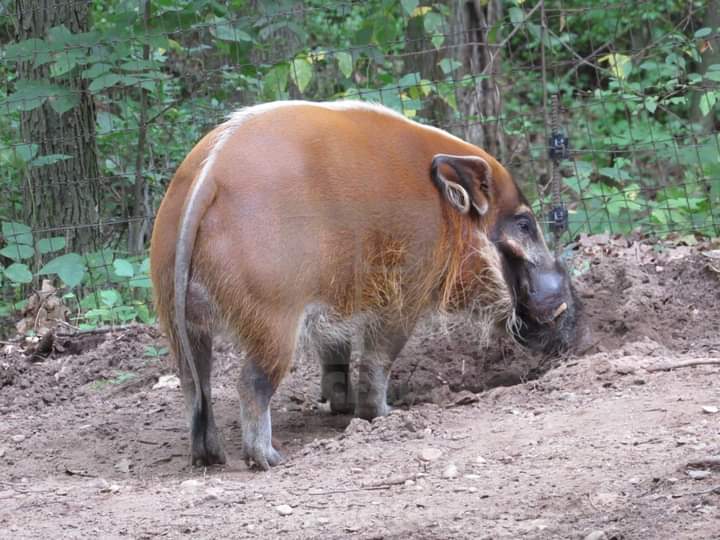
Are the most colourful of Africa’s wild pigs and on average, also the smallest — colourful in that the west African hogs are a lovely reddish colour and have a white stripe running down their back, and same with the ones found more eastern and southern habitats tend to be also red, but also brown darkening with age. Besides the striking colour and pattern, they have another wonderful ‘feature’ — although they are quick on land they are also good swimmers.
Chinese water deer
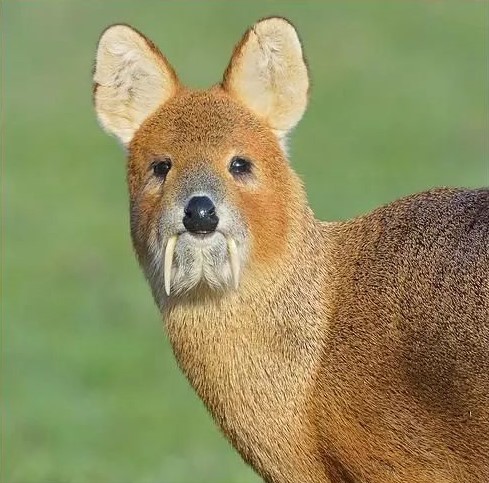
These are not musk deer, similar, but not the same. These deer are a small deer and native to China and Korea.
These deer do not have antlers, and male deer have longer teeth than the females because they fight with them and can cause serious injuries. These teeth, are teeth and are elongated (long) canines.
- This unusual deer is threatened with extinction and listed as ‘vulnerable’. It would be at a more severe conservation status, but has successfully been introduced to some countries, notably the U.K.
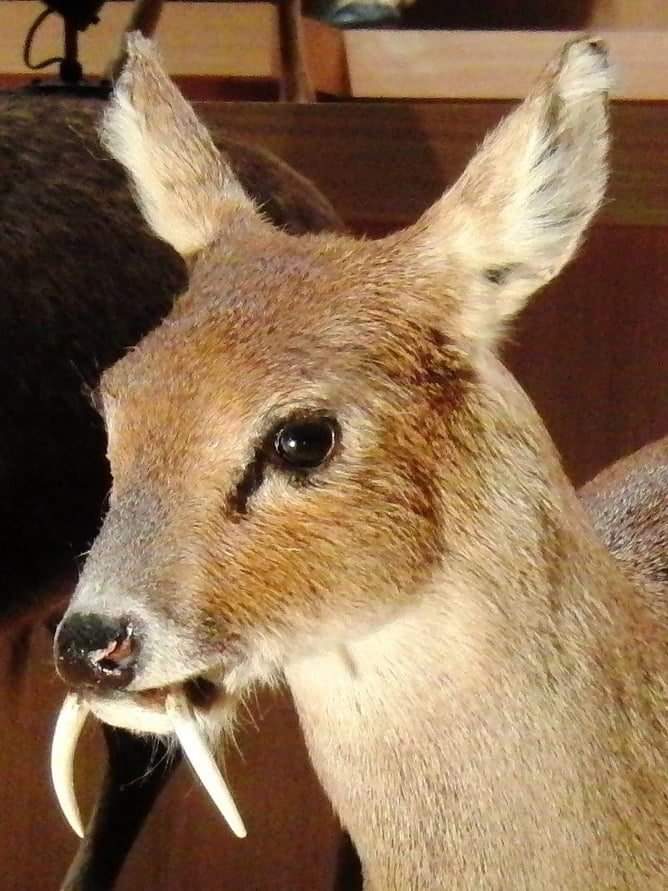
Chinese water deer are also called ‘vampire deer’ — no guessing the reason why. There are quite a few of these deer in Britain. They are not native to the British Isles, and native to China and Korea. The reason why you would think that, is because they were successfully introduced back in the 19th Century.
The Brazilian tapir
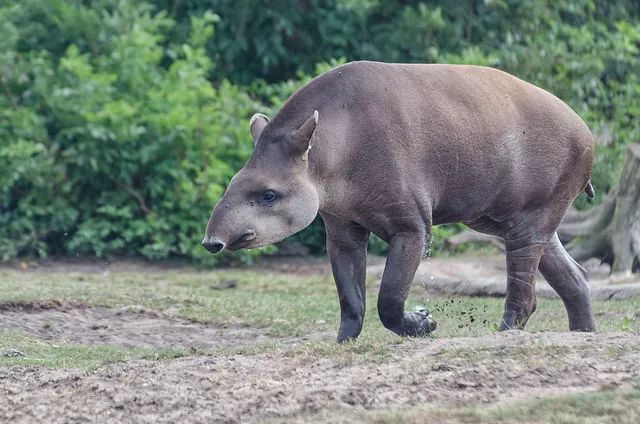
The Brazilian tapir is about the size of a donkey, but more powerfully built. They have a unique feature, which sets them apart from most large mammals: Their nose.
They have long (elongated) nostrils in a short trunk.As you can imagine, this gives them a brilliant sense of smell and helps them find the leaves they prefer, and they have to be careful of what leaves they eat because leaves also protect themselves — some have little spines covering them and some are poisonous.
Cephalopods – The Brainy Molluscs
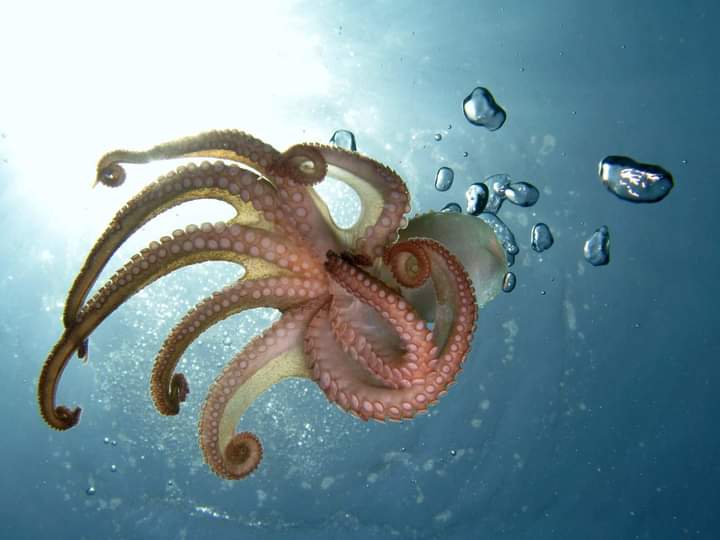
Cephalopods belong to a scientific classification known as ‘Class Cephalopoda’ of the ‘Phylum Mollusca’.
Cephalopods have members like Octopus, Squid and Cuttlefish. They are marine organisms (not freshwater). This class is the most advanced, brainy and most intelligent of the molluscs, and by extension, of all invertebrates (animals without backbone). They are capable of learning.
They have a large brain, brain-to-body mass ratio is the largest among the invertebrates. They also have the most highly developed nervous system of all invertebrates. Their eyesight is excellent, almost like that of humans, as studies have revealed.
They grow fast and generally have a short lifespan — 1-3 years but some species have a range of about 3-5 years.
Reindeer and Caribou General Africa Facts
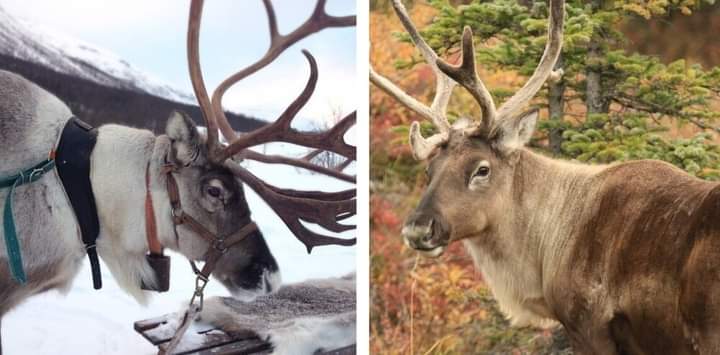
Fitting time to ‘talk’ about reindeer and caribou (which are also called North American reindeer, but…)
The North American reindeer are actually caribou — in general, they are the same species, but two different sub-species and they have a few, subtle, differences between the two.
The first one we notice is that they are found in different locations —
- Caribou are native to North America.
- Reindeer are native to northern Europe and Asia.
The second one is: - Caribou are wild-living animals that migrate long distances.
- Reindeer are domesticated and some are wild.
The third notable difference is:
Due to them migrating so often and over great distances, caribou are thinner and taller than reindeer.
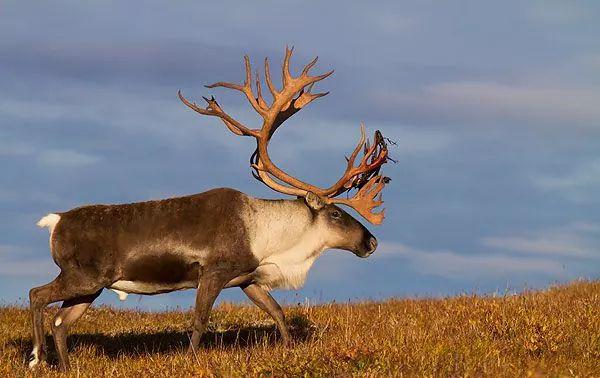
Caribous are the migrate the longest distance of any large mammal — a round trip of 3000 km (1865 miles). When they migrate, they head for the tundra (grassland) in Alaska and Canada to feed on the new growth, give birth and raise their young as far away as possible from predators. When it begins to snow, they head back and bravely migrate through the real threat of death by wolves and bears — again.
Wild cattle – The Gaur
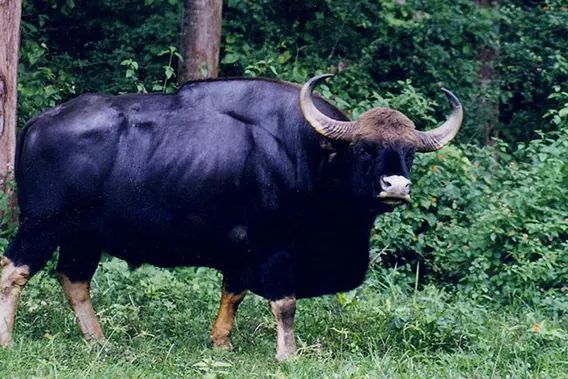
In India we find the largest species of wild cattle — the Gaur, also called the Indian bison. This magnificent animal is under threat from habitat loss and are now classified as a vulnerable species.
Coyotes – General Africa Facts
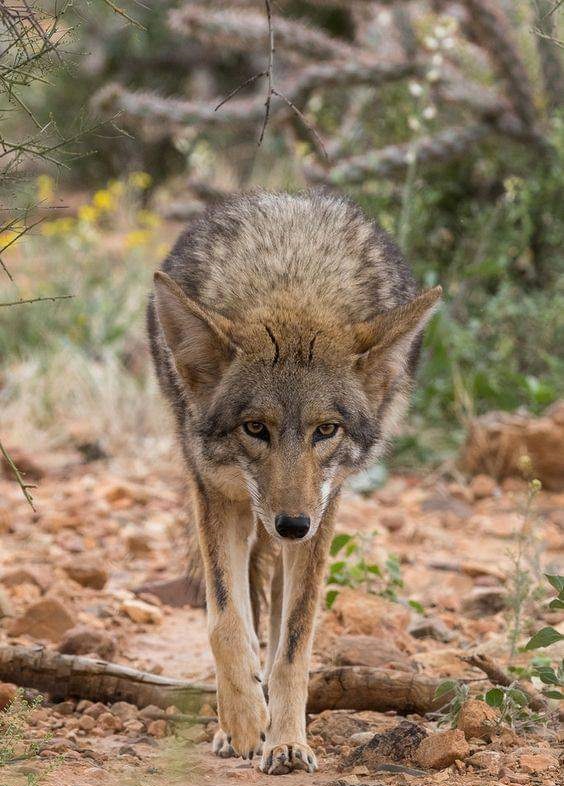
The coyote is closely related to the wolf and often appears in Native American folklore because they are very clever animals.
They will eat almost anything and having a keen sense of smell and brilliant vision is to their benefit of survival. The bulk of their diet is made up from mammalian animals, but they also eat other animals, as well as fruit and other vegetation.
What most of us do not realise is that they are very family-orientated and form strong bonds within their family/pack, but like some packs or clans, etc. they forage separately, so we tend to think they are solitary creatures. When the female gives birth, it is not only the female that raises the pups, but the male also shares the responsibility with her.
Amazon General Africa Facts
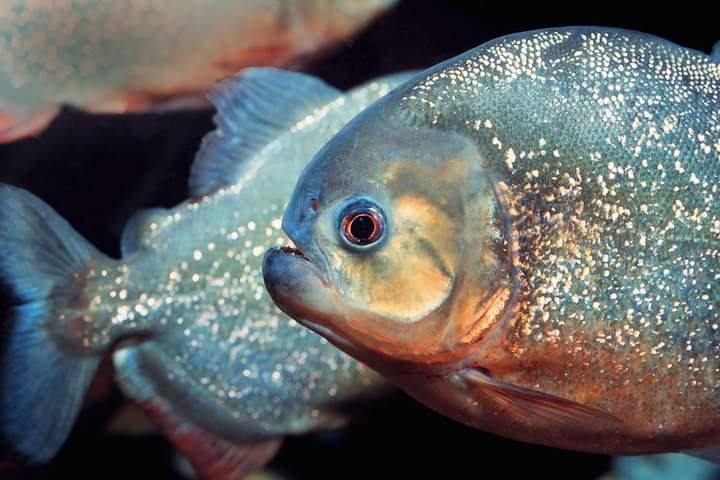
The Amazon river holds 3, 000 species of fish — that is more than the whole of the North Atlantic ocean.

